12, Semester 1, 2025
CONSPIRASOIT
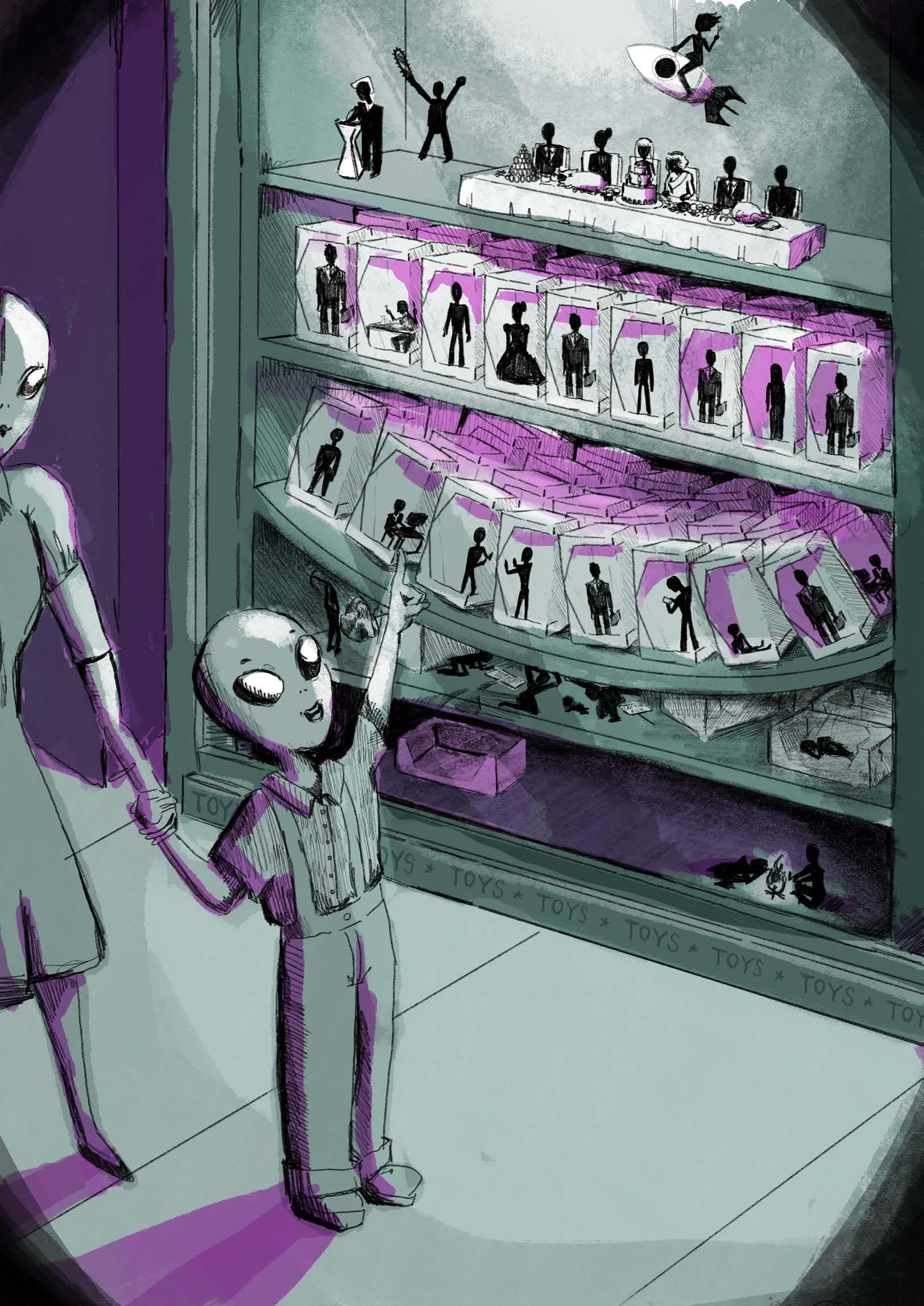
The Conspiracy of Free Will
“Thank you Conspiracy!” Says Capitalism, as it survives another day
In Defence of Psychoanalysis


Honi Soit operates and publishes on Gadigal land of the Eora nation. We work and produce this publication on stolen land where sovereignty was never ceded. The University of Sydney is a colonial institution. Honi Soit is a publication that prioritises the voices of those who challenge colonial rhetorics. We strive to continue its legacy as a radical left-wing newspaper providing students with a unique opportunity to express their diverse voices and counter the biases of mainstream media.
Conspirasoit
Cranberry Juice
Renting for
Flying
Cult of Honi Free Will? In This Edition...
An alien child kidnapped me and forced me to write this edition.
Harold, the name of the alien, told me:
“Charlotte, Charlotte, you know that silly little student newspaper you write for? You must expose the perils of capitalism, and how conspiracies exist not to destroy it but to ensure its survival, feeding the illusion of control you humans seem to love so much.”
I looked at his opal eyes in shock. “What do you mean? Who are you? Can I see inside your UFO?”
“You’re too short for the UFO, sorry.” Harold said neutrally.
people have the most. On my planet we have a guy named Karl Marx, and he runs the joint with us.”
“Oh wow, a communist alien, who would’ve thought.” I said.
“What’s communism?
“Anyway, what’s your student newspaper called? Honi Soit? Perfect, you should call your edition Conspirasoit.”
“Oh my gosh, Harold, you’re so intelligent!”
While Harold let me go, I had to do what he said because my family weren’t too short for that UFO and now they’re being held hostage on it. Aw shucks.
the overstimulating nightmare of a place that conspires to destroy your soul. On page 15, you’ll read about Ramla Khalid’s suspicions on free will, and on page 17, you’ll discover Cassidy Turrell’s flat earther alter ego.
On the back page you will find Honi’s very own version of the famous ‘Rice Purity Test’. Please retake it as many times as you’d like — alien Harold was not pleased when Honi put this in.
I hope you enjoy reading Conspirasoit as much as I enjoyed putting it together with my incredible editorial team. As I say in my feature on page 6, learn to breathe together again, keep reading, and always question authority.
OMG my family just got thrown out of the UFO, thanks Harold!
Miss Flat Earther
SRC Casework Puzzles
Editors
“Anyway, do you mind putting me on your front cover? I went human shopping the other day with my mother and I’m so interested in this system of yours, it’s so cool how very few
Within these pages, you’ll find Clara Tan’s Chemist Freakhouse on page 12, detailing
Companion Piece, Oscar Lawrence
Charlotte Saker: I tasked Oscar with a very specific and detailed concept that I am so grateful he did justice. I wanted to depict the commodification of people: trapped in boxes on shelves, each shelf representing a different social class. The middle class is the most crowded, weighing down the shelf beneath it both literally and metaphorically. The idea is that no matter your class, everyone is boxed in, though some manage to escape, either because they’re wealthy enough to transcend the system, or because they’ve been left out of it altogether. The aliens introduce the conspiracy element, observing the scene as though selecting from a catalogue of humanity.
Purny Ahmed, Emilie Garcia-Dolnik, Mehnaaz Hossain, Ellie Robertson, Imogen Sabey, Charlotte Saker, Lotte Weber, William Winter, Victor Zhang
Front Cover
Oscar Lawrence
Oscar Lawrence: This art request had me stumped for a little bit if I’m being honest — the task of blending something so real and tangible like the class system, with the surreal nature of conspiracy theory, felt like trying to mix oil and water. I think my piece does reflect a middle ground between the two concepts, highlighting the absurdity of the existence of both. My piece exists as a sort of parody of the wellknown political caricature of the pyramid of the capitalist system, within which the working class (often represented towards the bottom of the pyramid) are forced into the Atlantean task of bearing the weight of the middle and upper classes on their back. This is reflected through
Love, Charlotte.
the toy store’s shelves, representing each class, with the boxes symbolising comfort (or, alternatively, entrapment) within the system that they live in.
I think it reflects a lot of current feelings towards class disparity and injustice, some may feel the need to use conspiracy as a form of escape from the inevitable reality of the system we live under. Alternatively, the idea that some higher power is subliminally controlling us seems, in a sense, comforting.
Gracie Allen, Sophie Bagster, Iris Brown, Ewan C, Avin Dabiri, Gian Ellis, Emilie Garcia-Dolnik, Ramla Khalid, Ting Jeng Kua, Grace Lagan, Angus McGregor, Mehnaaz Hossain, Kiah Nanavati, Marc Paniza, Amelia Raines, Ellie Robertson, Imogen Sabey, Charlotte Saker, Clara Tan, Faye Tang, Cassidy Turrell, Sebastien Tuzilovic, William Winter, Judy Zhang, Victor Zhang
Artists
Chloe Drougas, Deepika Jain, Oscar Lawrence, Ellie Robertson, Clara Tan, Lotte Weber, William Winter

inquiries
Dear Honey Letter to the Editor
Since I am penning this fundamentally in relation to the conflict between Israel and Palestine, let me make my position on this conflict clear at the outset. I am an undergraduate Arts student and a returning student having initially graduated in the 1970s.
I condemn the killing, torture, and oppression of any human being. As a student of history however, I can understand both actions and reactions. This does not equate with agreement. People cannot enjoy peace and co-exist in an atmosphere of hate or fear.
The meeting convened by the SRC on Wednesday, which considered motions in relation to Palestine, the definition of Antisemitism, the Campus Access Policy and the position of Usyd was conducted in a civil manner. Respect was shown to Jewish spokespeople who sincerely opposed the motions, and at no time could they be justified in claiming otherwise.
Instances of anti-semitism that they spoke about on campus cannot but be condemned and culprits should be expelled. But do our Jewish students also recognise that those Jews who differ on the conflict are castigated by their own? They are “self-hating Jews”, they are shunned in their own community, alienated within their families, and also subjected to violence by other Jews. Ask any of them who are brave enough to be outspoken – ask the Peter Slezaks. I have Jewish friends who can line up and outline how they have been treated by their own community and also threatened with violence. Provocateurs also abound –ask those who witnessed “journalists” from Murdoch’s press who descended on the Cairo Restaurant in Enmore.
So much of the current debate takes as its starting point October 2023. Why? Hamas’ actions then, can only be seen by anyone who claims objectivity and rational analysis as a reaction. A reaction to what? Ask this question. All of history is action and reaction. Let’s not be sidetracked by labels such as “terrorists,” after all, Menachem Begin, who led Israel as its sixth Prime Minister, was an Irgun self-proclaimed Zionist terrorist in the 1940s.
So does the story start with October 2023? Does it start with 1948? Does it start (as our Jewish students told us at the SRC meeting) with the Romans? These questions will need to be settled to everyone’s satisfaction but can they?
The way forward is simple in suggestion but complex in achievement. It is a situation where Jews and Muslims and Christians share the land and live alongside each other. But peace will never be achieved while illegal settlements are tolerated, and what is left for Palestinians are the scraps and while they see what were their ancestral homes before 1948, stolen and “developed” by others. This in my view, means that a two-state situation will always be tenuous. There has to be one secular democratic demilitarised state that respects the equality of all regardless of gender or religion or race.
Let me finally say that I was an undergraduate in the late 1960s and a veteran of the student movement when thousands marched down Broadway to join the Moratorium against national service of young men who were not yet of voting age. The Viet-Nam moratorium opposed the war of the industrial West against an impoverished people who sought nothing more than to determine their own future. The greatest military power on earth was defeated by people who in some cases shot down enemy helicopters with bows and arrows!
Usyd never suffered as a result of the freedom allowed on campus to protest then. The University thrived as a vital element of democratic freedom and critical thinking.
Mark Scott with your anti-protest Campus Access Policy take note. The definition of Anti-semitism issue is manipulating the university’s management.
Byron Comninos
Dear Honi,
I was the student who found love. Now I am in the process of three tragedies.
The first tragedy was the project ending. I knew that the enjoyable times of us being together would not last long, that there would be no more excuses for us to work through the night alone together ever again. So once the project was finished, the first tragedy occurred.
The second tragedy is when this subject is over. Already, I only see her at best twice a week, but with only a few weeks left of this semester, it will be over too. In this small time left, I got to know her a lot better than before, but this too will become irrelevant. As uni must go on, the second tragedy will come.
The third tragedy is still something unknown. Whether I confess and be rejected, or it be the last time I see her ever, there will be a third tragedy to my onesided fairytale. I truly am scared and depressed in anticipation for the end ofsomething that has been truly special, but as a servant of my own life, I must accept and move on. Even with tears coming straight from my heart, the third tragedy isinevitable.
To Her: I don’t think you will ever read this, but if you do, thank you for bringing joy back into my life again, no matter how brief. I really appreciate all of our time together. Live your life well, please.
With Pain But Immense Gratitude, “A student who found tragedy”
To the Student who found love,
WHAT’S ON?
Cut Ties with HUJ Rally
23rd of May, 12pm Outside F23
surgcore by surgFM 23rd of May, 7pm The Chippo Hotel
National Day of Protest: Cut Ties with Trump’s America
24th of May, 1pm Sydney Town Hall
SRC Vaccination Drive 27th of May, 9am
Let’s Talk Endometriosis Panel
28th of May, 1:30pm F23 Auditorium
You might have found tragedy, but I won’t call you the ‘student who found tragedy,’ because tragedy does not negate the love you have experienced over the last few weeks.
I respect your acceptance of the change (or as you call it, the tragedy) that is taking place in your life right now. It is a difficult thing to come to terms with, the loss of something that was so special.
That being said… Where is your solutions oriented mindset? Where is the devotion and dedication that was present in your first letter? You have a phone — get her Insta or her number. You don’t have an excuse for late night study sessions? But you are still studying, and so is she — plan an evening to just study your separate subjects together. Build a friendship, if not a romance. If this is so important to you, you will at the very least try.
Yes, you might be rejected. But like you said, that is still unknown. To not allow yourself even the chance of a friendship or something more is to limit yourself.
Don’t limit yourself.
With hope, Honey
Rumour Has It...
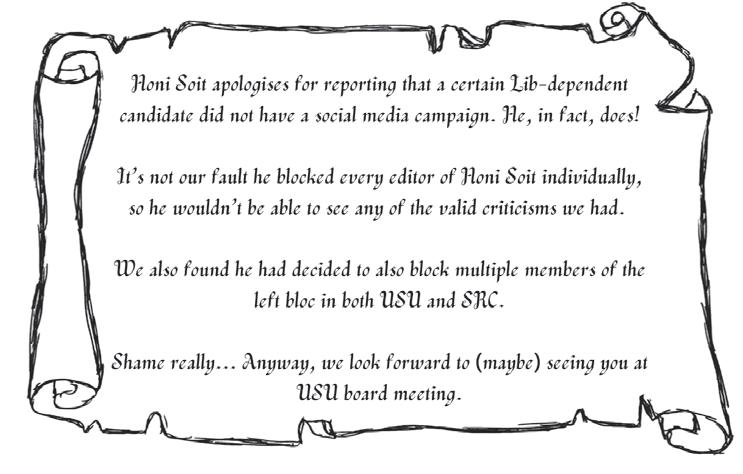
77 Years of Nakba: Thousands protest in Sydney against Israel’s Occupation
Sebastien Tuzilovic and Iris Brown report.
Thousands gathered in the rain on 15th May at Sydney Town Hall in protest on Nakba Day. This year marks 77 years since the Nakba, the initiation of the genocide with the first major displacement of Palestinian’s by Zionist settler colonialists. Between 750,000 and 1,000,000 Palestinians were driven from their homes, many murdered, many tortured and sexually assaulted. Al-Nakba, meaning “The Catastrophe” in Arabic, refers to the events of 1948, but for Palestinians the Nakba never ceased, and continues today.
Amal Naser of the Palestinian Action Group (PAG) began with an Acknowledgement of Country. Naser spoke of her family’s history and connection to the violence of 1948, emphasising that the violence and terror continues today.
Naser is the granddaughter of two Palestinian refugees who spoke to her of their witness to massacres where “no one was spared, not young, not old, not man, not woman”, where militias marched from house to house, expelling the Palestinians whose families had lived there for generations, where those seeking shelter were killed in the street.
Naser’s speech did not limit the understanding of the Nakba to a single historical event, instead explaining how it echoed throughout Palestinian history through the trauma suffered, and how the violence inflicted by Israel continues to this day. She stressed recent instances of war crimes such as the monitoring and limiting of calories entering Gaza, the bombing of food infrastructure, and the recent atrocities committed since October 7th. Her address ended with a recognition of the Australian Labor Party’s (ALP) complicity in this genocide through its inaction.
The first speaker, Fouad Charidi, was born in Al-Jalil, a village in Northern Palestine. He was just a boy when violent Zionist forces attacked, and was forced to leave his home. Charidi spoke at the rally; he has spoken at Nakba rallies in the past, sharing his story.
“If you open my heart, you will see Palestine,” he began. “It is our land, our sky, our dream which will never, never die”. He emphasised the ongoing nature of the Nakba, citing Israel’s continued ethnic cleansing of the Palestinian people and its recent manifestation last October. The current tragedy in Gaza is not the result of a war between two equal parties but a brutal occupation by Israel.
Charidi made reference to the many generations of his family that have lived in the land, stating “Jerusalem city was being built 2100 years before Moses was even born. We are not terrorists. We are peaceful people”. He noted that Palestinians have been robbed of their homeland, at the price of Israelis whose descendants are of other nationalities, including Israeli Prime Minister Benjamin Netanyahu, whose father was from Poland.
Damian Ridgwell of PAG, a co-chair of the rally also emphasised the ongoing nature of Israel’s relentless genocide since the Nakba. He talked of the 53,000 Palestinians killed since October 2023, and the support which the ALP provides Israel. This criticism specifically cited Penny Wong’s statements that Australia could not make determinations of Israel’s actions from afar. Damien stated that the Israeli Cabinet’s recent declaration is a clear sign that they wish to cary out genocide, deportations, and war crimes.
Renee Nayef, a Palestinian student from the University of Technology, Sydney (UTS), described the Nakba as a “catastrophe upon a catastrophe”. She condemned Israel withholding food from Gaza, and assassination of journalists, particularly the murder of Hassan Eslaih and a twelve year old witness. The lack of international response, Renee said, was indicative to the fact that Palestinian lives do not matter to the world.
“We know that these murders are not the exception. They are the definition… Palestinian bodies are the foundation on which this occupation was created, and they are the foundation on which it continues to develop. And therefore there can be no other option but to fight for the end of the occupation in its entirety.”
At this point rain began to fall and umbrellas went up, many with Palestinian flags printed on them. The Greens representative of Newtown in the NSW Legislative Assembly, Jenny Leong’s acknowledgement of country focused on the shared history of settler colonialism and genocide in both Israel and Australia. Leong spoke to the Greens’ support for Palestine and the current inaction of the Labor government, pointing to the recent “hype” by conventional news media over the Greens loss of seats as nearsighted, as they attempted to brand it as an issue of dwindling Australian interest in Palestine. She stated that for the Greens, supporting Palestine was not an electoral decision, but rather a moral one. Previous speakers
had also highlighted that the Greens vote was at a historic high, and the Liberals, a party which heavily supported Palestine, lost by a historic margin. Like the other speakers, Leong stressed the continuing nature of the Nakba.
Students for Palestine member Yasmine Johnson stated the genocide in Palestine started with the blessing of all major powers, including America and Australia. “They drew the borderlines and declared their ongoing support for a state which led, as its first objective, the annihilation of Palestine…the major powers have sat and watched as over and over and over again, Israel has erased and redrawn those lines to create new brutal realities for Palestinians”.
Johnson read out extracts from a letter by Mahmoud Khalil, a legal resident of the United States and prominent figure in proPalestinian university demonstrations, who had been forbidden to see his the birth of his daughter by the United Stated Immigration and Customs Enforcement.
“Why do faceless politicians have the power to strip human beings of their divine moments?” Johnson identified the root of the Palestinian suffering as a sick and twisted system that prioritises power and profit.
The march then began, past Town Hall and down through the city in the heavy rain. Musicians played Arabic music on the sidestreets, and protesters chanted and held aloft Palestinian and Lebanese flags. The protestors gathered where Pitt Street Mall meets Market Street to listen to the final address.
Dr Bushra Othman, a PalestinianAustralian and granddaughter of Palestinians who were murdered, and a doctor who had travelled to Gaza to aid at the Shuhada al-Aqsa Hospital, spoke about the attacks on healthcare workers and doctors, and of her colleagues who had been unable to help due to damage to their hospital. She emphasised the dire state of the hospitals in Gaza, stating that “all we can do is watch as patients die slowly before our very eyes”. She talked of her firsthand experience witnessing genocide. Her address concluded with reference to the martyred Palestinian dead.
“They’ve shown all of us how to wake up every single day and live with honour, dignity, and courage, they have sacrificed and paid the ultimate price. It’s time for us all to step up. Long live Palestine.”
USU Board Election Provisional Results Announced
The 2025 University of Sydney Union (USU) Board Election Results are in! This year, 12 candidates contested the election for six positions on the Board. Provisionally elected are Archie Wolifson (Independent), Sally Liu (Penta), Michelle Choy (Independent), Layla Wang (Independent), Annika Wang (Independent), and Noah Rancan (Liberal).
USU President Bryson Constable (Liberal) announced that over 5,400 members of the USU voted this year with the quota being 783 votes. While the quota is not significantly higher than the previous years which sat at 729 votes, the voter turnout was significantly higher. Voter turnout, while steadily increasing year on year, has still not reached pre-pandemic levels.
Undergraduate and Staff Fellows of Senate elected
Honi Soit reports.
After six months of vacancy, Ethan Floyd has been elected as undergraduate Fellow of the USyd Senate, the highest governing body of the university. Elected Senate Fellows serve two year terms. The 2024 election of the undergraduate Fellow was suspended following alleged ballot irregularities and a new election called for the position on 18th March, 2025. 3,848 students voted in this election.
The 2025 election of undergraduate Fellow of Senate also coincided with the election of three staff Fellows of Senate, with two fellows from and elected by academic staff members and one fellow from and elected by non-academic staff.
The two-year term of the staff Fellows begin on 1st June.
Elected by the academic staff are Professor Joel Negin and Professor Ben Saul. Negin is the Head of the Sydney School of Public Health. Saul, currently serving as one of the staff Fellows, is the Challis Chair of International Law at the Sydney Law School and the United Nations Special Rapporteur on counterterrorism and human rights.
Elected by the non-academic staff is Edwina Grose, Director of the Graduate Research School under the University’s Research Portfolio.


Charlotte Saker and Victor Zhang report.
Wolifson and Liu were elected over quota in count one. Wolifson received a primary vote of 901; Liu received 801 primary votes. Choy received the third highest primary vote and was elected in count eight. Both Layla Wang and Annika Wang were elected in count ten, each receiving a similar number of primary votes. Rancan was elected in count eleven.
Despite most candidates this year running
as independents, Honi has observed through preference deals that four of the six candidates elected, formed part of the left bloc.
In her report, USU Elections Returning Officer Simone Whetton described the campaigners’ “behaviour this year [as] the worst.” May the candidates cause more mischief on Board (within reason, of course).
Where is the outrage?: National protest against gender-based violence
Amelia Raines reports.
Content Warning: Mentions of violence and sexual assault against women.
Where is the outrage? Where is the media? Where is the USyd left? Where are the men?
On Saturday 10th May, national protests against gender-based violence took place, mourning the hundreds of women’s lives who have been stolen, and demanding government action after stagnant responses to the issue and unnerving silence on the campaign trail.
As of 9th May, 25 women have been killed in 2025, and 103 women were killed in 2024, according to Australian Femicide Watch.
Event organisers and community members remarked that various media outlets pulled out from covering the National Rally Against Violence to instead organise coverage for the newly
appointed Pope. It seems that this issue continues to recede to the bottom of the priority list of many, when it warrants unequivocal urgency. The crowd was passionate but not large enough, and predominantly comprised of women.
Organiser Jayda Khan opened the event with an Acknowledgement of Country. She commenced the speeches alongside organiser Amelia Grace Wilson-Wiliams.
“We don’t just gather as protesters. We gather as survivors.”
She remarked how the scourge of domestic violence went grossly unacknowledged by either candidate vying for Prime Minister: “We weren’t even a blip in the election. We’re here to say no more.”
She introduced feminist activist and Butterfly Foundation ambassador Mia Findlay.
“This is the third time I’ve spoken in Hyde Park”, she said. The last time she had spoken, in November 2024, protesters grieved the lives of 83 women killed that year. “In the few months since, 42 more women have been added to that tally.”
Prabha Nandagopal, a Human Rights and Discrimination Lawyer, remarked on the disproportionate reporting of women dying due to gender based violence, with deaths of women of colour continuing to be underreported in our communities.
The following speaker was Sarah Rosenberg, founder of With You We Can: a platform which assists survivors of sexual violence in navigating the justice system. She spoke to the continual failures of the criminal justice system to protect women. “Audrey Griffin’s murderer was known to police,” she said.
She spoke to the work of the Australian Law Reform
Commission Inquiry into Justice Responses toward Sexual Violence as a “step in the right direction”, with much more work needing to be done.
Wiradjuri woman and City of Sydney councillor Yvonne Weldon addressed the crowd and delivered a Welcome to Country.
She underscored the importance of a community approach: “Don’t stay silent and normalise the behaviours that cannot and should not be accepted.”
The rally concluded in solemnity, with organisers reading the names of the 103 women killed in 2024, and 25 women in 2025 as of 9th May. Attendees then observed one minute’s silence to pay respect to those who have been killed.
The National Rally Against Violence published six demands:
1. Investment in Primary prevention
2. Commitment to the
National Housing and Homelessness strategy
3. Mandate traumainformed training for first responders
4. Bail law reforms
5. Consent law reforms
6. Funding for Crisis Support services
It is incumbent on the whole community to show up against violence. Women will continue to show up and agitate until actual change is delivered — will men show up too?
If you or any of your loved ones have been affected by the issues mentioned, please consider contacting the resources below:
NSW Sexual Violence Helpline –1800 385 578
Wirringa Baiya Aboriginal Women’s Service – 1800 686 587 1800RESPECT – 1800 737 732
Read full article online.
“Every penny of our tuition fee becomes a missile fired at Palestinians”: Students vote against new definition of antisemitism at SGM
On 14th May, a Student General Meeting (SGM) was called to get student consensus on two topics: the new definition of antisemitism, and the University of Sydney’s ties to Israel.
Quorum was called at 5:20pm, with the meeting officially beginning at 5:28pm. The meeting was a formal vote on five motions:
1. Reject the new definition of antisemitism adopted by all Australian Universities
2. Endorsing the call for a single, secular, democratic state across all of historic Palestine
3. USyd completely revoke the anti-protest Campus Access Policy and commit to guaranteeing free speech and the right to protest.
4. USyd end its complicity in Israel’s apartheid regime and genocidal onslaught in Gaza
5. USyd SRC to financially and materially provide resources to support the campaigns supported in the previous motions.
Angus Dermody from Students Against War (SAW), speaking to the necessity of the SGM, said, “We are here because for the last year and a half Israel has… killed at least 50,000 people in Gaza, tens of thousands of those are children, tens of thousands are being starved to death.”
He referenced many ongoing ties between USyd and Israel, including exchange programs with the Hebrew University of Jerusalem, Technion, and Tel Aviv University; though he noted “We forced them to stop sending students to the Bezalel Art Academy in Israel.”
Dermody reinstated the aims of the meeting: “Cut ties with Israel, cut ties with Apartheid, cut ties with weapons companies.”
The first motion calling to reject the new definition of anti-semitism was moved by Bree, who spoke to the conflation of anti-semitism and anti-zionism as a tool used to “fearmonger Jewish students”. She reiterated the ongoing role of Jewish people in the fight against Zionism, and the separation between Judaism and Zionism itself. “Trying to smear proPalestinian protestors as anti-semitic is fighting the movement that is fighting for Jewish safety around the world.”
The first speaker against the motion spoke as a representative of the Australasian Union of Jewish Students (AUJS) and emphasised that they are elected by Jewish students from across different states. They stated that the movers of the motion at the SGM were uninterested in criticising Israeli policy but rather “interested in making Jews feel unsafe… interested in vilifying them”.
The second speaker in favour of the motion was Miriam, who spoke to the fact that this definition conflates any criticism of Israel’s actions as anti-semetic. The definition, the speaker argued, can and will be used to stop Palestinian solidarity on university campuses. She referred to UTS and UNSW as universities who have rejected the definition, and affirmed that “standing against injustice is not hate”.
The motion was then taken to a vote, and was carried unanimously.
The second motion was to endorse a single, secular, democratic state across historic Palestine.
The first speaker for the motion, Sophia, spoke about the importance of being involved in university action on Palestine and resisting complicity and complacence in genocide. “No one can be authentically human while preventing others from being so.”
The first speaker against the motion, the same speaker from AUJS, spoke in support of a two-state solution, saying “I completely agree… but I don’t see at all how one big state where everyone lives in Kumbaya, you know, everyone’s suddenly going to start loving each other, and no one’s going to kill each other anymore magically. I don’t see how that achieves self-determination for either people.”
The second speaker against the motion said “I would like for you to all look at how Hamas, a terrorist organisation, came into government in Gaza. This is just one simple example of a lack of factual information behind the things that we are voting on. You’re welcome to stand up and turn your backs on me, I won’t take it personally.” The crowd immediately stood up in unison and turned their backs on the speaker.
The motion was then taken to a vote, and was carried.
A procedural motion was moved by Dermody to move Motions 3, 4, and 5 en bloc and to wrap up the meeting with a rally at F23. The procedural carried.
The first speaker for the bloc was Jesper Duffy (QuAC). Duffy talked about the weaponisation of free speech and the use of the Campus Access Policy to censor students. “The university has told us
time and time again that this policy is for the psychosocial safety of everyone on campus, that we are allowed to dissent, but only quietly, so as not to offend the sensibilities of anyone who does not agree with us. They monitor the left-wing students on campus.”
The second speaker in favour was a First Nations student, who said “My people suffered massacres and genocidal ideology to the point where I can’t even look at my family tree two generations back because it’s gone… I came here hoping for a safe place from a really queerphobic, racist town in Queensland. And yet, what am I met with but racism, queerphobia… the threat over protesting. It is disgusting, it is sickening, and I will not stand for any of it.”
Fisher asked if speakers against the bloc would like to be given a ground reply. Seeing none, the reply was waived and the bloc was taken to a vote. The bloc was carried unanimously.
With all motions carried by an overwhelming majority, the SGM is called to a close. After the SGM, students went to rally at F23 to continue the protest.
Students held up banners that read ‘Free Palestine’, and ‘Anti-Zionism [does not equal] Anti-Semitism’. Crowded around F23, Vieve Carnsew closed the rally: “I’m going to end [the rally] with a chant that the University and Albanese have tried to ban us from chanting: From the river to the sea, Palestine will be free. From the sea to the river, Palestine will live forever.”
Read full coverage of the SGM & rally online.
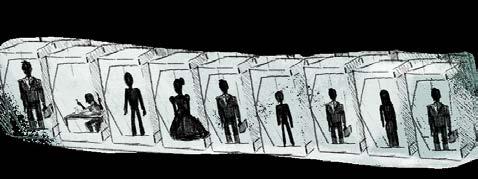




Conspirare: “To breathe together”. The latin root is a poetic embodiment of harmonious human consciousness, and perhaps our oldest political act. Yet, drifting through centuries of upheaval and paranoia, conspiracy has been swept into the undercurrent of modern fear.
Conspiracy has curdled from communion into something more sinister.
Now a word defined by shadowy plots and secret cabals, conspiracy has taken root across every institution: from papal banking scandals to climate change denialism, to QAnon and election rigging. But beneath these headlines lies something stranger still. In the 21st century, conspiracy has transformed again, into the invisible lifeline of a system built on illusion: capitalism
Woah,it’s another essay on capitalism. Not.
Capitalism is often imagined as a machine: banks as gears, markets the engine, and governments the control panel. But beneath these mechanics, it runs on belief.

The belief is in endless growth, in merit as the measure of worth, and in markets as neutral arbiters of value. As The Limits of Neoliberalism, the market is not a spontaneous force but a “carefully constructed fiction”, one that has been elevated to the
legitimise inequality as deserved, exploitation as progress, and crisis as innovation. In an unstable world, these stories offer the illusion of order.
We seek stories to bring humanness to a greater sense of being. There is no such thing as time: we collectively decided thousands of years ago to experience life as a passage of years. Days, minutes, hours are constructions which weave together our experience of our plane of existence. Capitalism is the fable we choose to experience as a collective conscious. Without such a way of being, we exist in
socio-economic anarchy. Yet, capitalism begets a sense of naturalness which excuses its flaws and negates its purposeful conception.
As Naomi Klein explores in This Changes Everything, even environmental catastrophe is recast as market opportunity, disaster capitalism turning collapse into commodity. What we believe about capitalism is less about economics than about storytelling.
Conspiracy, then, is capitalism’s most seductive genre. It offers the comfort of control, the idea that there’s an author out there writing each chapter of the world, which is easier to accept than a system with no author, no centre, no exit. As Fredric Jameson famously put it, “conspiracy is the poor person’s cognitive mapping” a way of making sense of a system too abstract to grasp. It is easier to name a villain than to face the machine.
Like a conspiracy theory, capitalism explains harms such as inequality, climate collapse, and political inertia through a system that feels coordinated. There’s no mastermind, just structure where outcomes feel intentional, even when no one is in control.
Where conspiracies hide in shadow, capitalism hides in plain sight. Its genius is in naturalising itself so completely that this system is the only way of achieving ‘normal’.
At the intersection of capitalism and conspiracy is a peculiar kind of faith in explanation rather than truth. We crave stories to create order out of chaos, and while conspiracy gives us a puppeteer to blame, the real power lies in the strings. The quiet, structural forces we mistake for fate.
Much like capitalism follows the process of commodification, extraction, and alienation, conspiracy too follows a process. My favourite rendition of this is Subhendu Das’ eight-step model:
1. An activity begins, driven by organisational selfinterest.
2. It is designed to benefit business, not society.
3. It gains momentum and spreads.
4. People forget who started it and why.
5. It becomes mainstream, and dissenters are seen as foolish.
6. Society is brainwashed and cannot think otherwise.
7. The activity no longer advances humanity; it merely sustains business.
8. Negative effects emerge, but the system is too entrenched to stop without force.
Here, unethical behaviours become naturalised.
Capitalism doesn’t simply contain conspiracies: it is structured like one. Capitalists don’t meet in secret rooms, but follow a logic that is concealed by normalisation rather than abstraction.
At the core of Das’ eight-step conspiracy process is the revelation that systems designed for business interests gradually become so culturally embedded they seem natural. Think about the fast fashion industry, the Sheins and Temus of the world. Clothing is sold at prices so low they defy logic, because the real cost is offshored to underpaid workers, toxic dyes in rivers, and landfills of discarded stock.
People buy into the system because it is convenient and affordable. There is an inherent need for the existence of this ‘convenience model,’ since it is the only one many of us know. The goal is not to clothe individuals, but to sustain a business model. By the time consumers realise the environmental and human cost, the practice has already become a cultural habit. As Das notes, “You do not need a secret room for conspiracy. All you need is collective forgetfulness.”
This is how we maintain the paradox of fast fashion, this fatalistic assumption that the systems exist and are inevitable.
We can look at this phenomenon using physics. Das claims that profit violates the “sigma law” his term for the laws of conservation: “The amount of material and labor used for the product must be equal to the cost.” You must violate or cheat the sigma law to make profit. Profit is not value creation, but extraction disguised as growth: a systemic deception.
Hidden fees drain billions from consumers annually; both political parties are owned by the same capitalist interests, meaning “no matter who you elect, capitalism always wins”. Even democracy is part of capitalism’s conspiracy, an illusion of choice designed to mask an underlying lack of power.
Capitalism manufactures conspiracy theories to ensure its own survival. From celebrity culture to mass media, from consumerism to free market ideology, these stories atomise society, keep people “stupid, sick and isolated” and prevent collective revolt. “We know we are doing bad things, but we cannot escape,” Das writes. “Capitalism is pulling us down.”
Like politician Mark Fisher, who showed how capitalism absorbs dissent and turns rebellion into lifestyle, Das shows how conspiracy operates as a logic, not necessarily a secret. It is a system with no single villain, only incentives and illusions. Fisher called this capitalist realism: the belief that nothing else is possible. Das calls it organised crime against people and the land. I call it something else: the condition we live with, endured because stories help us survive the chaos.
Real conspiracies become invisible not because they are




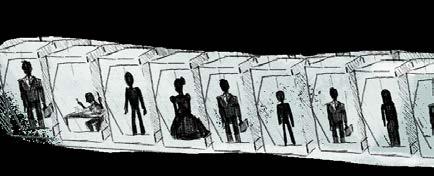
hidden, but because they are routine. There is no mystery when it is all around us. This is how capitalism survives. Once the public forgets who started the system, why it exists, or how it profits, the process can sustain itself indefinitely. Look no further than the Vatican and its enactment of the capitalist order.
The Holy ConspiraSee
The Vatican — the Holy ConspiraSee if you will — is God’s symbol of divine order. On most days, the Holy Spirit floats around protecting the ancient fortress of earthly divinity, but in the 1980s, the Holy Spirit seemed to have disappeared for a little bit. See, the Vatican has housed one of the most complex financial conspiracies of the modern era. Behind its spiritual sanctity,the Vatican Bank, formally titled the Institute for the Works of Religion (IOR) became a hub of global laundering, Cold War funding, and capitalist ambition cloaked in the language of God.
The most infamous episode came with the collapse of Italian Bank, Banco Ambrosiano in the 1980’s, whose main shareholder was IOR. Its chairman, Roberto Calvi, dubbed “God’s Banker,” was found hanging beneath London’s Blackfriars Bridge. His death, ruled a murder, uncovered mafia links, offshore shell companies, and over one billion dollars in vanished funds. The Vatican denied responsibility, but later agreed to pay partial restitution for its “moral involvement.”
The IOR operated with little oversight. It was exempt from Italian law; its books were closed; its leaders answered only to the Pope. A 2025 Guardian report revealed that Pope Francis had inherited a “box of documents” from his predecessor, detailing the scandal in full: a symbolic passing of a systemic conspiracy from one papacy to the next.
According to Fortune, the Vatican Bank manages roughly $6 billion in assets, much of it tied to religious orders and charitable funds, and remains plagued by mismanagement. The Organised Crime and Corruption Reporting Project released that, despite Pope Francis’s efforts to restructure financial governance, the IOR still faces significant criticism for internal opacity and inadequate compliance.
The Pillar Catholic argues that merely treating Vatican corruption as a spiritual failing, rather than a financial and political system failure, risks enabling its continuity.
Looking at the human failings of those who claim to represent God on Earth; it’s clear the Church did not simply fall into scandal. It followed Das’ conspiracy process step by step: elite profit, public amnesia, institutional immunity. Its faith-based legitimacy became the perfect cover. In the same way we do not question the Church’s belief in the existence of God, we do not question the existence of the capitalist system that cloaks us like a hug. As Das puts it, “Capitalism is organised crime disguised as a system.” In the Vatican’s case, that disguise was moral sanctity.
They rigged my election!
Conspiracy also thrives in democratic systems, particularly through the narrative of election fraud. While there’s little evidence of large-scale rigging in countries like the U.S. or Australia, the belief in it is politically powerful. It is a belief built on tiny bricks of mini conspiracy. If we know that sabotage occurs on a small scale, it is easy, even comforting, to believe that larger actors can string together a larger narrative of malicious fraud, snatching autonomy from the hands of the voters. The creation of a larger, ‘plausible’ conspiracy of electoral deception mires our ability to see the broader construction of the capitalist system.
This netting of plausible electoral distrust transforms structural disillusionment, with inequality,
representation, or stagnant policy, into a personal grievance. When trust in journalism and science collapses, capitalism’s own chaos fills the void with conspiracy.
Right-wing media outlets such as Fox News and Sky News actively exploit this distrust. They don’t just reflect conspiracy narratives, they help build them.
PBS NewsHour has detailed how post-2020 election denialism spread via coordinated misinformation, boosted by algorithms and monetised outrage.
What’s striking is that the real conspiracy often doesn’t happen through ballot-stuffing or hacked machines, but through legal, systemic manipulation. In How to Rig an Election Cheeseman and Brian Klaas show how authoritarianleaning governments undermine democracy through more subtle means: gerrymandering, voter suppression, media capture, and weaponised bureaucracy. It’s about engineering outcomes before votes are even cast.
This logic extends beyond the U.S. to Australia. In the lead-up to the 2022 federal election, Clive Palmer’s United Australia Party spent more than $100 million on targeted ads that stoked distrust in both major parties, established vaccine policy, immigration policies framed as threats to “Australian values,” and the electoral process itself. Palmer’s campaign, though comically unsuccessful electorally, helped flood the information space with confusion and suspicion. Meanwhile, groups like Advance Australia have echoed the rhetoric of stolen elections and “woke elites” borrowing directly from the Trumpian American far-right playbook.
According to Monash Lens, Australian conspiracy movements have increasingly adopted QAnon-style language, reframing everything from public health to voting logistics as ‘elite sabotage’. Despite repeated factchecks from RMIT FactLab and the Australian Electoral Commission, myths about ballot harvesting, digital voter manipulation, or globalist interference continue to circulate.
These beliefs persist because they offer a comforting narrative. The danger is that when real electoral threats of corporate influence, political advertising loopholes, or fake news arise, they’re harder to address in a landscape clouded by manufactured paranoia. The myth of rigging becomes a tool not of revolution, but of reaction. And capitalism remains untouched, protected by the fog.
The world’s on fire
Perhaps no conspiracy better captures capitalism’s evasive genius than the one surrounding climate change. Denial is no longer fringe, it’s a coordinated survival strategy. For decades, fossil fuel giants like ExxonMobil funded misinformation campaigns, not to disprove climate science, but to delay regulation and buy time.
These campaigns planted just enough doubt to paralyse political will. Right-wing media reframed climate action as a threat to personal freedom and national identity. Climate change became a culture war. The science, too complex or too confronting, was replaced by digestible narratives: the electric car as saviour, the metal straw as rebellion, the “woke elite” as villain.
As Berkeley News notes, “Scientific papers are hard to understand… you’re more likely to believe someone you trust in your community.” In the climate space, this often means influencers, YouTubers, or TikTok creators repeating

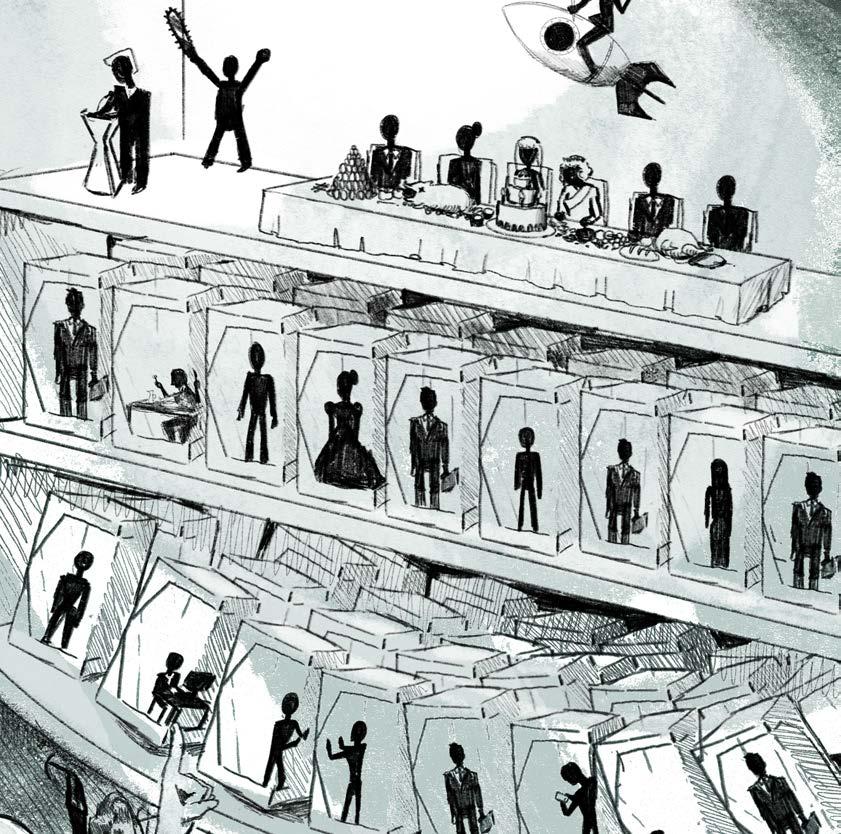
misinformation dressed up as relatable content. Not because they’re malicious (sometimes), but because capitalism rewards engagement, and nothing engages like conspiracy.
Meanwhile, capitalism rebrands the crisis as opportunity. Enter green capitalism: the idea that we can consume our way out of collapse. Corporations sell sustainability while continuing to extract. Take Shell PLC; the oil giant sponsors climate conferences and advertises net-zero goals, even as it expands fossil fuel projects and lobbies against reform. Its ads turn public relations into moral cover. The story looks green, so no one asks about the emissions.
Coca-Cola, regularly named one of the world’s worst plastic polluters, markets its bottles as recycled and pledges to recover every one it sells. Yet it continues to produce billions of single-use plastics, most of which will never be recycled. The branding promises a circular economy; the reality is landfill.
These aren’t just hypocrisies, they are stories crafted to redirect scrutiny while business continues as usual. There is no denial, but misdirection.
So keep monetising, narrativising, and redirecting the destruction. Critique is welcome too, as long as it never demands real change. As Mark Fisher writes, “Far from undermining capitalist realism, this gestural anticapitalism actually reinforces it”.
The ultimate conspiracy isn’t that climate change isn’t real. It’s that capitalism wants you to believe you’re solving it, just don’t ask the wrong questions.
When I looked up the origin of “conspiracy” and that smug AI box told me it meant “to breathe together”, I couldn’t stop thinking about how time distorts everything; meaning, values, and of course, capitalism. Once a beacon of freedom and individuality, it now turns life into a commodity. Maybe we’ll get that ‘sustainable capitalism’ everyone keeps promising. Or maybe we just have to move forward with the freedom we have as best we can.
If stories have kept capitalism alive, maybe alternative ones can infect it.
Art by Oscar Lawrence.

On Art and Bearing Witness: Ahmed and Sakr on the Nightmare Sequence
“They try to silence us, but Palestine is everywhere, it’s even in the silence.”
— Lucia Sorbera
On 7th May, there was an invitation to participate in collective witness-bearing at the University of Sydney. Lucia Sorbera, chair of the Discipline of Arabic Language and Culture, as well as Professor of History, Michael McDonnell, hosted a panel on The Nightmare Sequence in conversation with Safdar Ahmed and Omar Sakr. The Nightmare Sequence is a collection of poems and artworks that bears witness to violent injustices; it is a testament to truth, a refusal to succumb to an erasable digital and cultural memory as well as the continued attempts to dehumanise Palestinians, and a collaboration that is committed to detailing the necessity of continued decolonisation across transnational bounds. It is a work that documents the insidious span of the Western empire beyond Palestine, alongside the cruel impacts of such: the collective grief, the destruction of an ideal of common humanity, and the dislocation of communities across the globe. It is truly devastating and a necessary read that ensures the violence of the Zionist entity and its Western allies will never be forgotten. Reading The Nightmare Sequence is a powerful punch to the gut, and it has never been more urgent to engage with works that continue to bear witness to violence mercilessly inflicted, on a scale never before seen in human history, against an innocent population.
Ahmed has emblazoned many of his artworks with the stamp ‘Genocide Culture’ as a term that both explicitly refuses the narrative of 7th October 2023 that decontextualises over 75 years of Israeli occupation, and holds to account Australian and broader Western continued complicity in the colonisation of the so-called Middle East. One jarring image in the book, imprinted with the term, references the Sufafend Massacre. In 1918, occupying Australian, New Zealander and Scottish soldiers committed a massacre against the citizens of the Palestinian village Sarafand Al-Amar, killing between
40 and 137 civilians. Speaking to the term, Ahmed said: “On one hand, it’s bad enough to see a genocide on our phones in such an unprecedented way, often by people filming [the horrors of] their own deaths. It’s shocking and horrifying. But, as an artist, a deeper horror came from feeling the inertia of our leaders and our media to tell the truth. The indifference in Australia’s political and media [landscapes].”
Contextualising the work, Sorbera noted the tradition of poetry across the Arab world, particularly elegies to commemorate the prophet Mohammed, and located the book as following “[the] footsteps of this long tradition.” In response, Sakr commented on the role of the Arab poet to lament and the value of cultural resonance beyond borders. He said that “[The Nightmare Sequence] is a continuation of my work, not an aberration”, that continues to discuss the violence reaped by the Western empire on Arab lands. Sorbera then probed the utility of art in the face of genocide, to which Ahmed responded that art constitutes “[an] informal counter discourse to the way Palestinians are commonly framed, [that is] through a dehumanising lens.” He notes that alongside horrifying images of genocide, there persist such powerful images of compassion. Directly referencing Hind Rajab, Ahmed said that “millions of people are sharing these [humanising] images, which is an important re-interpretation. Many of my pictures were in the spirit of those images.”
This too has manifest political implications in the domestic Australian context, as Ahmed noted the collapse of “every institution in our society due to the silencing of what is happening.” He directly referenced Antoinette Lattouf as an accomplished journalist unjustly penalised over support for Palestine. Ahmed further said that “the [media] cowardice is appalling because what is [the job of the media] if not to talk about [genocide]. If you can’t connect inequality here to the more global context of colonisation, genocide, and apartheid in Palestine, then what worth is it? Art has some help in opposing that. I’m sick of light installations that say fuck-all about this historical moment.”
Emilie Garcia-Dolnik writes.
To the same question, Sakr spoke to his own craft, bringing the question to the broader global context, where “poets are imprisoned around the world. In the global south, they are among the first to be imprisoned. One reason is because of the immediacy and reach to the masses, [as well as being] easily memorisable, aimed at the power of dictators and the ruling class.” To the audience he said that “all of us have a responsibility. We are using art in this way because we are artists. Whatever you do, use your leverage.” Sakr had his own poetry workshops cancelled last year following a Zionist smear campaign. Speaking about the experience, he said that “safety was the context for the cancellation of my workshops. It’s frightening to be gaslit every single day, by authorities using authoritative language. One day they will pretend that they weren’t saying these things, but we can prove it.”
In this realm of the imaginative future, Sakr and Ahmed expressed a cautious hope. Sakr was quick to acknowledge “we still have Nazis. A significant proportion of the population is celebrating [genocide]. [We can be] deliriously hopeful”. He continued, “The entire [human rights] framework has been pushed to a point of crisis. Race is being the thing that has cracked it open… We need decolonisation. This genocide cannot be forgotten. We have to fight from here.” He reminded the audience that “student resistance for Vietnam was not quick. It happened over several years.” Ahmed also urged the necessity of activist collaboration, and the marriage of scholarship and academic grounding in literature with activism to all students in the room. If nothing else, heed these words and let them spur you to act.
Sakr and Ahmed have crafted an incredible book that is truly horrifying and necessary. It is a potent reminder of the power we all possess to counter violence and dehumanisation through the act of bearing witness and acting in solidarity. All proceeds from book sales go to Palestinian charities. Honi urges all readers to support The Nightmare Sequence or donate directly.
The Death of Reason: How QAnon Reveals Our Post-Truth Reality
When philosopher Jürgen Habermas conceptualised the public sphere, he envisioned a space where citizens engage in rational discourse to reach consensus about social and political truths. This ideal rested on the assumption that participants would evaluate evidence, recognise logical arguments, and modify their positions accordingly. Today, that foundational premise lies in ruins. The rise of QAnon, a conspiracy theory claiming a secret war between Donald Trump and a cabal of Satan-worshipping pedophiles, represents not merely a fringe belief system, but the collapse of this shared epistemological framework.
The QAnon phenomenon reveals a profound truth: the rational citizen, the cornerstone of democratic theory, has always been more mythological than real. The discourse process isn’t simply a disagreement about facts, but constitutes competing realities operating with fundamentally incompatible methods for
determining truth itself. The movement’s rapid growth from obscure 4chan posts in 2017 to a political force that helped fuel the Capitol insurrection demonstrates the fragility of the rational public sphere in an era where algorithmic media has replaced traditional information gatekeepers.
Within just three years, Q’s cryptic messages spread from anonymous message boards to mainstream platforms, finding receptive audiences among religious communities, suburban parents, and eventually elected officials. This wasn’t mere viral spread but a systemwide failure of our information ecosystem, where social media platforms optimised for engagement amplified the most emotionally resonant claims while factchecking remained isolated in increasingly distrusted legacy media.
We comfort ourselves with the belief that humans are fundamentally rational creatures — that given the same evidence,
reasonable people will reach similar conclusions. QAnon demolishes this comforting fiction. Most disturbing about QAnon isn’t that its adherents reject facts, but that they believe they are the true rational actors, the ones who’ve ‘done their research’. This self-perception as researchers is contradicted by their methodological approach, which relies heavily on confirmation bias rather than falsifiability, and their rejection of expert consensus in favour of anonymous, unverified sources.
They’ve developed elaborate methodologies to decode “Q drops”, the cryptic messages posted by the anonymous figure known as “Q” on platforms like 4chan and later 8chan/8kun. These drops, often written in an intentionally vague and ambiguous style, contain what followers believe are coded intelligence revelations about government operations and coming events. The very first Q post from 28 October 2017 on 4chan’s /pol/
board exemplifies this pattern. It alluded to an imminent extradition of Hillary Clinton, claimed her passport would be flagged, and predicted riots and people fleeing the country. Despite none of these events materialising, followers didn’t abandon their belief in Q. Instead, they reinterpreted the message in ways that preserved Q’s credibility, shifting timelines or claiming these actions were happening secretly. QAnon adherents spend countless hours analysing these posts, looking for patterns, timestamps, and connections to Trump’s tweets or public statements, creating complex systems of pattern recognition that mimic academic research. They call themselves ‘digital soldiers’ engaged in ‘information warfare’, assembling what they see as evidence into a cohesive worldview.
This isn’t mere ignorance. It’s an alternative epistemology, a competing framework for determining what counts as truth. The QAnon phenomenon shows how
Why UTIs Are Every Woman’s Worst Nightmare
Kiah Nanavati wants a solution better than craberry juice.
Urinary tract infections (UTIs) are often relegated to the sidelines of medical discourse, treated as minor, routine, and easily fixable. Unfortunately, for millions of women, this couldn’t be further from the truth. UTIs are one of the most common bacterial infections worldwide, disproportionately affecting women due to their anatomy, and their recurrence rate means many women live in fear of their next episode. Questions of dread flow through their mind: ‘When will it happen?’ and ‘How bad will it be?’ Behind the clinical terminology and cursory treatment lies a world of discomfort, disruption, and emotional exhaustion — one that is too often invisible.
An Epidemic Hiding in Plain Sight
Statistics show that over 50 per cent of women will experience a UTI at least once in their lifetime, with nearly a third suffering a recurrent infection. The numbers alone should be enough to raise alarm, but UTIs remain under-discussed and under-researched in broader medical conversations. Why? Because they are seen as commonplace: a “women’s issue” that is uncomfortable but ultimately harmless. This perception is not only inaccurate, it’s dangerous.
The consequences of untreated or mismanaged UTIs can be severe.
What starts as a burning sensation during urination or an urgent need to pee can escalate to a kidney infection (pyelonephritis), or in extreme cases with the worsening of symptoms, sepsis — a potentially fatal immune response.
The delay in appropriate care, often due to diagnostic oversights or lack of awareness, contributes significantly to these outcomes.
The Biology of Inequality
One of the reasons UTIs are so prevalent in women is simple biology. Women have shorter urethras than men, making it easier for bacteria (typically E. coli) to travel from the urethral opening to the bladder. Additionally, hormonal changes, particularly during menopause or pregnancy, can influence the balance of vaginal flora, further increasing susceptibility. Yet this biological vulnerability is often used to normalise infection rather than prompt better prevention and care.
What’s more troubling is the cycle that recurrent UTIs create. Women who experience one are significantly more likely to experience others, and each recurrence brings with it not just physical discomfort but mounting emotional strain and anxiety. The dread of another infection can alter behaviours, from how one engages in intimacy to how frequently one uses public restrooms, subtly but significantly eroding quality of life.
Misinformation and Medical Neglect
Women who present with UTI symptoms are frequently met with outdated advice: drink more cranberry juice, wipe from front to back, urinate after sex. While these tips may have some credibility, they often serve as band-aid solutions rather than comprehensive medical responses. Worse, some women report being dismissed by healthcare professionals, particularly when infections recur, or when tests return inconclusive results.
Antibiotic resistance has also complicated treatment. UTIs are bacterial and therefore antibiotics are the frontline response. However, overprescription, or inadequate dosing, has led to increased resistance, making some infections harder to treat. This not only prolongs pain but also increases the risk of complications. Furthermore, patients are often left in the dark about why infections recur or how to prevent them beyond general hygiene.
The lack of funding for women’s urinary health research further compounds the issue. UTIs are often categorised under general urological conditions, with limited distinction made for gender-specific impacts. Consequently, innovations in diagnostics, treatment, and prevention lag behind, leaving many women reliant on the same therapeutic tools that their mothers used decades ago.
The Emotional Toll
While the physical symptoms of UTIs are well-known — pain, burning, urgency — the emotional and psychological impact is vastly under-acknowledged. Women with recurrent UTIs often describe feeling embarrassed, ashamed, or isolated. The unpredictable nature of infections can interrupt daily routines, strain intimate relationships, and cause significant mental stress. For those who endure repeated medical visits, tests, and misdiagnoses, feelings of helplessness can deepen.
This “silent agony” is what makes UTIs more than a health inconvenience. It’s a recurring threat to autonomy, confidence, and emotional well-being. Many women living with recurrent UTIs report feeling trapped by their bodies, with the fear of unpredictable infection recurrence impacting daily life. This anxiety is often intensified by a broader sense of dismissal from healthcare systems and society at large.
Calling for Change
What’s needed is not just better treatment, but a cultural and medical shift in how we perceive, and prioritise UTIs.
Healthcare providers must be trained to take symptoms seriously, especially when dealing with recurring cases. Faster diagnostic tools, personalised care plans, and alternative therapies to antibiotics must be developed and made accessible.
But systemic change also starts with public awareness. Just as endometriosis, PCOS, and menopause have recently entered mainstream health discourse, so too must UTIs be part of an honest conversation about women’s health. Normalising the discussion can break down stigma and lead to more compassionate, informed care.
Women deserve to live without fear of an infection that society has minimised for too long.
By shining a light on the hidden burdens of UTIs, we can empower women to demand better: from their bodies, their doctors, and their healthcare systems.
the very concept of rationality has become weaponised. Both sides of our political divide now claim the mantle of rationality while dismissing opponents as irrational, emotionally driven, or ‘triggered’. Mutual dismissal makes genuine dialogue impossible, instead pushing people deeper into informational echo chambers where their beliefs go unchallenged, further fragmenting the Habermasian public sphere.
For decades, trusted institutions like the media, academia, and science served as arbiters of shared reality. These gatekeepers are now crumbling under sustained attack from multiple directions: economic pressures that prioritise clicks over truth, political efforts to undermine institutional credibility, and technological platforms that flatten distinctions between experts and amateurs. The result is an epistemological vacuum where conspiracy theories can flourish.
‘Do your own research’, a QAnon rallying cry, sounds reasonable enough. In practice, it means rejecting traditional knowledge authorities in favour of YouTube videos, anonymous imageboards, and social media echo chambers. When institutional trust collapses, the vacuum is filled by those who speak with absolute certainty, offering simple explanations for complex problems.
QAnon flipped traditional epistemology on its head: rather than evidence leading to conclusions, followers start with the conclusion (the cabal exists, Trump is fighting it) and work backward to find supporting evidence. Any contradicting information is dismissed as disinformation, part of the conspiracy itself. As Q cryptically puts it: Disinformation is necessary. This self-sealing quality makes QAnon nearly impossible to refute for those already inside its reality tunnel.
Our information ecosystem further exacerbates these tendencies, designed not for truth but for engagement. Platforms like YouTube, Facebook, and Twitter don’t optimise for accuracy — they optimise for emotional response. The algorithms that govern these spaces don’t distinguish between true and false rather amplifying content that triggers strong reactions. Content that makes us feel righteous anger, moral superiority, or existential fear spreads faster than nuanced analysis or uncomfortable truths.
QAnon exploits this perfectly. Their narratives tap into: fear of child exploitation, distrust of elites, and hope for justice. Each new Q ‘drop’ functions as a cliffhanger, keeping followers perpetually engaged as they await the next revelation. By casting followers as heroes uncovering hidden truths, QAnon provides meaning and community to those who feel alienated by mainstream society.
The uncomfortable reality is that QAnon reveals the fundamental flaws in how we conceive of human rationality. We are not primarily logical creatures who occasionally succumb to emotion. We are emotional creatures who occasionally use logic to justify what we already believe.
Understanding this isn’t about excusing dangerous conspiracy thinking. It’s about recognising that addressing our posttruth crisis requires more than simply providing ‘facts’ to the ‘misinformed’. It requires rebuilding systems of shared reality and trusted information, a project that may define the coming decades of our democracy. The real question isn’t why some people believe in QAnon, but whether any of us can truly claim to be the rational citizens that we imagine ourselves to be.

“You go to the places you don’t want to go to”: Inside the rental crisis facing older Australians
Grace Lagan reports on the experiences of Australia’s older renters.
Rob* calls me just after his latest rental inspection, which has thankfully gone well. “The [property manager] was actually decent, they didn’t pick on having some laundry on the couch or whatever.”
He’s seen the full gamut of landlords and realtors over the years. Now in his late forties, Rob has been renting since he was 19. While he’s worked on and off, the disability pension has been his major source of income since he left home. Rob is currently living in a major regional centre in Victoria. He will be renting until he gets off a social housing waitlist, which, in his estimation, may take seven to ten years.
The other option is to purchase a home using the money he stands to inherit upon the death of his ageing father. “Sadly, it is [factored into my lifeplanning]. I don’t want it to be. That’s the only way I’ll ever get out of renting.”
“The current rental market is awful”, said Jamie from South Australia. “I am self-employed with a low income, so I expect that I will be renting for the rest of my life.”
While the major parties spruik policies to support younger Australians into home ownership, Rob and Jamie are part of a growing cohort of older renters forced to compete in an increasingly expensive private rental market that often doesn’t cater for their needs.
Renters over 60 now make up around 12 per cent of the Tenants’ Union of NSW’s advice and advocacy caseload. That’s “almost a doubling” on the figures six years ago, according to Tenants’ Union CEO Leo Patterson Ross. He notes the upward trend has been observed across housing providers and advocacy bodies, including homelessness services. “They’re also seeing similar increases in [the number of] older people who are struggling because they have been renting”.
Reporting on the housing crisis tends to focus on the plight of millennials and Gen Zers, locked out of home ownership by the invidious interaction between rising dwelling prices and paltry wage growth. Implicit in these accounts is the treatment of home ownership as the best — or as economists would say, optimal — mode of accommodation. We tend to take this assumption for granted but like many national myths, the ‘Australian Dream’ of home ownership is not so much founded on collective aspiration as it is on a set of specific and entrenched policy settings.
This phenomenon has been recognised since at least the mid-1980s, when public policy academic Francis Castles published his influential history of the Australian welfare state, The Working Class and Welfare. In Castles’ account, Australia’s historically robust industrial relations system and redistributive wage regulation allowed for the development of a “wage-earner welfare state”. Under this system, most people had high enough incomes to buy their own homes early in their working careers and pay them off by retirement. This meant that welfare benefits like the Age Pension were set at lower levels, because they arguably didn’t need to account for accommodation costs.
You don’t need an economics degree to recognise that times have changed since then. Trade union membership has dropped precipitously, wage growth has slowed, and rates of home ownership have declined from their post-war peak. What hasn’t changed is the assumption that welfare benefits
don’t need to cover accommodation costs, despite research from the Australian Housing and Urban Research Institute showing that if rates of outright home ownership declined, Australia’s pensioners would be some of the poorest in the OECD.
There are significant individual, systemic, and fiscal consequences for our nation’s reliance on private homeownership — consequences that older renters are already beginning to experience.
Married Brisbane couple Katie and Adam both owned homes in previous relationships which they sold in their respective separations.
“If we owned our own place it would be bliss”, Katie said. “[It would be] a place to grow old and raise our grandchildren together and it hurts me that I have to rent”.
The couple are now considering moving to Bangkok to escape the expense of the Brisbane housing market. Unable to save for a deposit while also paying rent, Katie is also worried that they won’t be able to retire if they stay, given they “haven’t had superannuation [their] whole lives.”
Patterson Ross also notes the particular difficulty faced by renters who haven’t earned superannuation over their entire working careers. “They haven’t had as much time to build up a large pool,” he said. “Particularly for older women, we see people who might have almost no super and so they really are reliant on the Age Pension, which is, I think, recognised as not adequate, particularly for renters.”
Reliance on income support payments also limits renters’ choices of where to move. “When you’re renting on Centrelink, you go to the places you don’t want to go”, Rob said. “You go to places where the crime rate is high, or where you’re hours from the major cities.”
It can also complicate applying for private rentals. Rob notes that most lease applications will only ask if the individual is employed or unemployed, requiring him to extensively explain his source of income. “A lot of landlords will look at someone with a pension and go, ‘no’.” This is despite the fact that, as he argues, his income under the disability pension is effectively “guaranteed”.
Of course, not all benefits are created equal, and older renters may be left in the lurch if they are forced to suddenly rely on a lower rate of payment.
Rob’s elderly mother is also a renter, living in South Australia with Rob’s stepdad — we’ll call them Anne and Michael. The pair are able to afford a rental property for just the two of them because Michael receives the Veteran Payment, a benefit paid at a higher rate than all other income support payments bar ABSTUDY.
Rob worries about what will happen to Anne when Michael dies. “When he passes, she will have to get a roommate. That’s depressing.”
While moving out with flat mates might be a rite of passage for younger renters, older renters are understandably more averse. “There are young people on job seeker who really wouldn’t like to be in a sharehouse, but there’s a broader number of young people who are more comfortable,” notes Patterson Ross. “It sort of feels more normal, whereas for an older person, it can feel more confronting and uncomfortable.”
“I don’t want to have to share someone’s house at this age, I don’t want to have to do housemate things”, said Rob. However, with rental prices on the rise, sharing is beginning to become a necessity for some older renters. While currently living alone, Jamie has previously “shared accommodation with different people four times”. Katie and Adam have “no choice but to have a boarder”.
Older renters are also likely to face more difficulty moving. “Health and mobility issues [narrow] the suitable rental buildings available,” said Jamie. “The stress and physical efforts involved with frequent moving from 12-month and other short-term leases is also more difficult.”
Patterson Ross also notes that older rents may have “more ties to a particular community or location that are harder to replicate”. This can lead to difficulty accessing “medical assistance, but also social supports as people’s mobility and different aspects of their health decline.”
“We’ve seen this particularly in relation to public housing or social housing relocations, but also in the private rental market as well. Someone with Alzheimer’s will really struggle to change location. When [they] have to move home, it’s really disruptive to their ability to continue to live independently.”
As both Rob and Patterson Ross acknowledge, older generations aren’t the only demographic struggling in Australia’s private rental markets. “The worst combination [for renting] is to be someone young and on low income”, Rob argues. I am struck by his empathy for younger renters, in spite of the generational wars we’re constantly told are raging.
When asked about whether they believed the newly re-elected Labor government would take action to fix the housing crisis, none of the renters were completely convinced substantive change would be realised.
“I am hopeful something will be done. They’ve promised more public housing and the first homebuyers scheme looks to have promise.” Rob said, but he worried that builders and developers would be able to exploit smaller-scale, demand-side reforms to “jack the prices up.”
Jamie and Katie both considered the prevalence of investment property holdings among politicians on both sides of the aisle to be a barrier to substantive political change.
“I doubt that any significant changes will be made to help renters, especially given that they have already backed off of overhauling negative gearing and capital gains tax,” Jamie said.
In a call back to the Castles thesis, Patterson Ross suggests the problem could be solved by ending Australia’s fixation with home ownership.
“If we made renting better and made it more attractive, it would actually ease the pressure on owner occupation. I think at the core we need to make sure that renting is a viable option for people for their whole lives, because it is”, he said. “There are a number of reasons and situations where people aren’t going to be able to buy, That doesn’t mean they shouldn’t have some stability, some dignity in their homes”.
* The names of some interviewees have been changed to preserve their anonymity

Euro-blind
It’s that time of year again. The sea of flags illuminated by bright lights, the slightly dated Europop bangers with bizarre staging, and of course the wind machines, are all back once again for another year of Eurovision. Eurovision is a lot of fun, and it claims to be an apolitical competition but, as we know, claiming to be apolitical is in itself a very political stance. In an international opinionbased competition like Eurovision, it is impossible for it not to be.
Eurovision by nature projects the values of the European Broadcasting Union (EBU) and by extension the European Union (EU); thus, political entries which promote these values are often overlooked and not policed. Songs campaigning against war, such as Hungary’s 2015 entry ‘Wars For Nothing’ and 2020 Polish entry ‘Empires’ in support of climate action, sing about heavily politicised topics. However, they align with the goals and values of the EBU and the EU hence they are let off the hook.
This is most clearly expressed through the competition’s inclusivity, especially of the LGBTQI+ community. As early as 1961, gay man Jean-Claude Pascal won for Luxembourg. The most successful song in the competition’s history belongs to intersex competitor Salvador Sobral. Drag Queens Conchita Wurst and Verka Serduchka, Bicons Loreen (singer of Euphoria and Tattoo), as well as Duncan Laurence (singer of Arcade) and largely queer band, Måneskin are all examples of queer competitors who have won or come second in Eurovision, and have received global recognition from the competition. Last year queer artist Nemo won with a song about their
Red-Haired Phantasies:
experience as a non-binary person. Hence, it’s safe to say that queerness is at the core of Eurovision. We’ve seen numerous examples from the Turkish, Hungarian, and Chinese broadcasters showing their dissatisfaction over queerness at Eurovision, and Eurovision maintaining their values in response. Eurovision has continuously been a major supporter and safe haven of the community, one in which queer artists can not only compete, but can flourish, which is vital in the Western world, where homophobia and transphobia are rising.
While queerness is prominent at Eurovision, the same cannot be said about the visibility of people of colour.
Eurovision remains a predominately white competition with Dave Benton (2001 winner) being the only winner of colour.
Korean-Australian Dani Im remains Australia’s most successful competitor and 2024 French competitor Slimane came 4th and proceeded to perform at the Olympics. Despite this, there have been numerous entries by people of colour, such as Aboriginal Australian Artist Zaachariaha Fielding and Surinamese-Dutch artist Jeangu Macrooy who both brought innovative and culturally rich performances, but achieved underwhelming results in the competition.
Eurovision is also representative of the political zeitgeist of the times. The 2009 Georgian entry ‘We
The So-Called Manic Pixie Dream Girl
Shortly after my first ex-boyfriend mailed my CDs and meaningless tchotchkes back to my parents house, I dyed my hair red. I had just watched Eternal Sunshine of the Spotless Mind for the first time. And then I watched it again. I made my Mother watch it. I watched it in the bath, late, on school nights, procrastinating exam study with my own private intertextual affair: here was Clementine Kruczynski, and here was I, sharing the shallow waters of subjectivity.
Of course, that wasn’t the only reason I chose the colour red. I was fascinated by 14th-century medieval knights who dedicated their performances to specific ladies. These knights would take something personal from their loves — their heart — and wear it on their sleeves into battle to prove themselves worthy, to prove themselves vulnerable. This was, I decided at seventeen, my Goddess origin story. For if Aphrodite could rise from the white foam of her hateful father’s genitals to breed love, I could rise from the blood of war with sunshine hair, whole organs embroidered on my sleeves.
Perhaps, never graduating from the romance of meaning, I was inevitably subject to the Manic Pixie Dream Girl (MPDG). That flighty, spontaneous creature most commonly found on screen and in John Green novels. The Clara Bow of kitsch, of excess. The bright-haired maiden, dragging the insecure protagonist from scene to scene. She is from the loins of the sensitive writer-director, Nathan Rabin famously stated, to which he, five years later, published an article entitled I’m Sorry For Coining The Phrase Manic Pixie Dream Girl
Although the fictionality of her own kind fluctuates. We know, inherently, that the MPDG does not exist outside of these films, the way we know vampires do not really exist — but it does not stop us from wanting them to exist. Rather, the MPDG manifests a set of semiotic criteria that are not only desirable, but mythological. Here is a colourful-haired, creative, strange woman. She
is the pinnacle of difference, of mythology that we desire until she is actually that strange, creative and colourfulhaired woman. Until she stains the bathroom tiles with her hair dye. Until she is actually spontaneous, actually vulnerable, actually fully-fleshed with her own kinds of turmoil and unbegotten memories. Not a woman, but a concept, an art object, a statue of projection, a place of idle worship.
Essentially, the study of the MPDG is a kind of nymphology. It is an annex to a much larger building, she exists in the same way that the unicorn or perplexed fairy exists. For as children, our imagination, our play is the most intense, serious and emotional occupation. Children create, rearrange the world in ways pleasurable to them. In his essay Creative Writers and Day-Dreaming, Freud relates that the “opposite of play is not what is serious but what is real.” That the child can very well distinguish play from reality, and yet links such imagined objects or situations with the tangible, palpable world, creating the (otherwise phallic) phantasy. And yet, Freud argues that we never really give up on play as adults; we only exchange one thing for another. That “what appears to be a renunciation is really the formation of a substitute or surrogate… the growing child, when he stops playing, gives up nothing but the link with the real objects.” This is to suggest that the surrogate for the little boy fantasy of the topless mermaid, of the cheeky tinkerbell, of the colourful playfulness of the childhood imagination is the birth of MPDG. Of the magical woman who is here to save him, the nymph who he dreamed of in pre-pubescent slumbers had her nose in Being and Nothingness in the Vegan Cafe by his dead-end job.
The MPDG is the imagined object placed in the palpable world, told to surprise us, to romance us, to save us. She is told to be unapologetic, but only in the eyes of visual difference. She is told to sit, stay, be good. Be loud, but not too loud: the Middle English etymology of ‘drem’ referring only to noise. Manic Pixie Noise Girl.

Don’t Wanna Put In’, which was contextually framed by the Russian invasion of Georgia, was disqualified because of its lyrics, which were not subtle about their feelings towards a certain Russian leader. Contrasting this, 2016 Ukrainian entry ‘1944’ claims to be in reference to the 1944 invasion of Crimea by Germany and not about the 2014 annexation of Crimea, and this was considered within the rules. In 2022, Russia was expelled from the competition, directly because of the Russian annexation of Donetsk and Luhansk that year, and Ukraine had their third win on account of their record-breaking amount of public votes. The competition has since been an opportunity for the Ukrainian people to call for support and ask for aid, with their 2022 entry raising $3.7 million in the following year. Hence, Eurovision can both highlight the European perception of Russia, through which side is being appeased, and also inform the public about Russia and its allies. If Russia is banned from competing in the competition that celebrates European values then evidently, they don’t celebrate them.
With the current system advantaging Jury Favourites as the semi-finals are public vote only, and roughly a third of the public votes consistently going towards Israel and Ukraine, assisting the jury favourite winning the competition since this change was made.
While Eurovision is doing many things right from a surface level perspective, improvement needs to be made in order to create a truly progressive competition.

And yet, she is a dangerously easy role to fill. I’ve watched the ease of my body bend to spontaneity, the impulse to be memorable or dazzling kick me hard in the ribs, unable to breathe sentences of my own. I could be anybody, anything you liked, as long as it meant you wanted me. I have been a victim of this phantasy both on once-off dates and fully committed relationships: the semiotics of a creative, strangely-fashioned and brightly haired woman overpowering the girl beneath the plastic shell.
I am no stranger to her. Neither is she to me. We woke up in the same bedroom with the same purple mascara. We burn the same incense, read the same JSTOR articles. We long to be a mermaid in the ocean and know just what to say to that ubiquitous-looking male when his eyes start to search ours for some kind of object permanence that we alone cannot place. Manic Pixie Dream Girl is tired. Manic Pixie Dream Girl is wine drunk. Manic Pixie Dream Girl is some kind of concept, some kind of play in which all the actors are seldom seen but are really shadow puppets, which scared you as a child but under her guise you feel… safe. Warm. Homely. A pleasure akin to Freud. Has she ever read Freud? You doubt it. But she recites T.S. Eliot to you like it’s the ingredients on the back of cereal boxes. Do you even eat cereal? Does she? I know she doesn’t: we burn the same incense.
It is so easy to become a conspiracy of a woman, when she was the position you loved me in the most.
Art by Clara Tan









It’s Vending Machines All The Way Down
“The Flying Turtle beverage machine found me when I needed it most.”
Walking around campus this semester, it’s impossible not to notice the absurd number of new vending machines. Almost every library and learning hub has wall-towall food and drink dispensers.
This is not random. A University spokesperson confirmed to Honi Soit that they were “trialing a new range of vending machines” as part of a larger plan to increase food options.
Rushing past the Carslaw learning hub, you will spot a (broken) machine advertising hot pizza. If you are desperate for a meal late at night at ABS, there is a mini mart selling microwavable hotdogs and burgers, among other ready meals.
While many new offerings exist, no machine is more interesting or important than the Flying Turtle. Located in four areas, including Fisher, Carslaw, and ABS, the machines are not merely a way to get a sweet treat but serve over 180 unique combinations of drinks, including coffees, teas, sodas, protein shakes, and smoothies.
According to the University spokesperson, the machines make up a whopping onethird of all vending machine revenue on campus, despite only arriving this January.
Every part of the machine’s design rewards continued engagement. Students choose if they want their drinks iced or hot, the sugar level, and whether they want a straw (save the turtles!). Many of the drinks cost under $4, and all include a cup of chewable hollow ice. If that was not enough, a loyalty program, which 80 per cent of USyd users are signed up for, allows students to collect points. The prices are so good, one Reddit post asked people if the machine was a scam.
The Thai company that owns the machines told Honi it operates 150 across Australia, with 36 in Sydney. Getting your fix off campus is as easy as a short trip to Newtown Station.
The Flying Turtle has reached almost cult status among parts of the student body. One student summed it up well, “Flying Turtle is like Yochi without the price. It satisfies my desire for a sweet treat without emptying my wallet and opens me up to a world of possibilities.”
The drink itself, a mix of syrups and powders, is not the addictive factor. Every Flying Turtle order is a captivating game that draws on all five senses. The sounds of the beans





Angus McGregor orders a drink.
grinding and the cute animations on the large touchscreen combine to create a beverage out of seemingly nowhere. The screen has a counter which displays the total amount of drinks sold globally, a number approaching 220 million.
Curiosity itself can be a motivator to keep coming back. As one USyd law student told Honi, the experience of watching the drink being made was worth the purchase. “I wonder how they fit all the different drinks into such a compact and streamlined machine,” she said.
Beyond that, Flying Turtle is always in the right places at the right time. For that law student, the machine found her when she was kicked out of her ABS booth the night before her Public International Law exam: “The Flying Turtle beverage machine found me when I needed it most.”
not charge any upfront cost to get them on campus, and the University simply receives “a 10 percent commission on all sales.”
Suppose you ever feel guilty about how much extra money you are spending. In that case, the University has informed Honi that all the proceeds go to support USU’s FoodHub, which provides free food and other essential items to students struggling during the cost-of-living crisis. That’s more than I can say about other venues on campus.
According to company data, the most popular drinks on campus at the time of writing are the Iced caramel latte, matcha latte, Thai milk tea, yuzu soda, iced mocha,
For the University, the machines represent an easy source of revenue. The
the company did

Chemist Freakhouse
In my peripheral vision, I espied a familiar blur of primary colours standing out amid the generally earthy hues of Central Sydney. I turned and headed in its direction.
In 100 metres, I would be visually, sensorially, and financially fucked in every way possible.
As I stepped foot into Australia’s top warzone of consumerist freakery, a fusion scent of chemicals and greed infiltrated the air around me. A familiar unease crept up on me and gripped my senses.
First things first, sanitary pads.
I first encountered this rainbow paralysis when I moved to Australia last July. Yet, even after almost a year, my nervous system still fell victim to the haphazard frenzy of this pharmaceutical exile… or rather, Chemist fucking Warehouse. Every footstep I took depleted me, stripping away any remnants of my already wavering sanity. I’d reached what felt like the bleakest point of my existence: A Chemist Warehouse Victim in Desperate Need for Self Care Products but More Importantly Xanax Pills
$10.00 $11.10 $9.55… I brushed past the neon post-it toned price tags that had their bold, striking numbers protruding jarringly from the shelves around me. It
was as if these price tags harboured the power to morph into the CEOs of CeraVe and Cetaphil at any given moment. Then they’d reduce me to my weakest form, sending me into the frantic hellhole of agonising over which brand to buy from and the inevitable doom of consumer coercion.
The pharmacy prided itself in offering cheap prices and discounts. Ultimately, though, this was a manipulation tactic to lure customers into the trap of buying more products, all under the guise of Rachel from the FASS1000 tutorial telling them to get hair care products from Chemist because “Girl at least it’s cheap!”.
“Do you guys sell this product?”
“I’ll get back to you.”
“Bro where is the shampoo?”
“Dunno, should be somewhere here.”
“Are these perfumes authentic???”
As if the endless buzz of conversations around me wasn’t enough, one of Taylor Swift’s 82718 break up songs played on the radio while my AirPods blasted Just Dance by Lady Gaga in a bid to elevate the downfall of my senses. This only had me plummeting even deeper into my sensorial decline — the fluctuating wavelengths and frequencies of peoples’ voices entwined with the stark contrast between You Go Girl 2000s music versus Jake Gellyenhaal yearning crippled my eardrums. I was
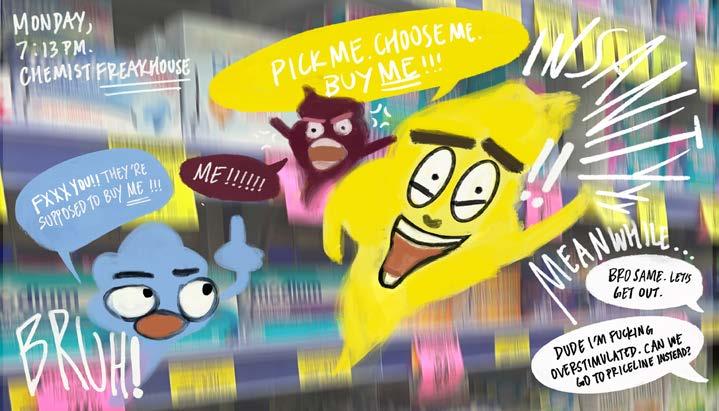
Selling everything from chargers and ice cream to drugs and university merch, this new class of vending machines gives us a fascinating insight into what students value about the modern university. Like everything else, beverages have become a flashy and gamified experience designed to scrape in a bit more cash. These experiences seem to be a more important part of campus life for some students than classes themselves.
As I finish this article in ABS, chewing ice and sipping limeade, it’s hard to mount a strong argument against that culture. As long as the profits keep flowing to FoodHub, the deeper implications can wait for another article.
Right now, I am just excited for the next drink combination the Turtle bestows on me and for the Pizza machine to become fully operational.
stuck in a haze of auditory degradation that ignited a mental implosion and had a ripple effect on my sweat glands and brain chemicals. I’d never been a fan of noise cancelling products but in moments like these I wished I was.
For a store constantly teeming with customers, I sensed an unspoken fatphobic prejudice in the narrowness of the store’s aisles as I squeezed my way through fellow victims. It was as if this sadistic pharmacy wanted customers squirming through the aisles the same way gym bro protein powder brands fought for space in the relentlessly expanding market of Toxic Masculinity™.
As I trudged closer to the creams and moisturisers section, my occipital cortex screamed at me, imploring me to flee the crushing mental and physical turmoil of sensory overload.
Get me out!!!!!!!!
Wait….but I do need my sanitary pads… and shampoo…and skincare…
Fuck it, I’ll just go to Priceline instead.
Sanitary and sanity definitely didn’t go hand in hand at Chemist.











The Case for Psychoanalysis
The first time I came across Sigmund Freud was in the high school English classroom. My teacher — youngish and hippish — grimaced and apologised for the necessity of his appearance. After an article about Freud biographies surfaced last year in the New Yorker, a reader mailed in to decry him, exposing that he’d lied about treating eighteen cases of neurosis. Even in my German-peopled literature class at Freie Universität, the session focusing on psychoanalysis in the fin-de-siecle was speckled with denunciations of Freud’s frivolity, perversity, and fraudulence. “It’s sick that people actually like psychoanalysis”, a classmate said, giving me a baleful eye.
Many charges have been levied at him: fraud, insanity, sodomy and homophobia (by turns), frivolity, misogyny, and irrelevance. Many of these are true, yet Freud remains deeply influential. Merve Emre (who penned the New Yorker essay) writes that in recent years there have been Freudian books for the pandemic, for Ukraine, for Palestine, for transfemininity, for the far right, and “for the vipers’ nest that is the twenty-first-century American university.” Why is he such a singular, persistent spectre of our culture? Firstly and instinctively, I look towards his style.
It’s an axiom now that students of literature read Freud much more than students of psychology. The action of psychoanalysis, like the action of much literature, lies in the disclosure of the true causes of messy situations. What Freud does with the most virtuosity and elegance is nothing other than literary hermeneutics. Freud is best when he’s making these outrageous, sweeping claims, eloquently and radically drawing connections that nobody else might see. To an English student, it seems obvious that the work he’s performing is that of a critic; he’s interpreting Sophocles, the Bible, and the life of Leonardo da Vinci; he’s excavating meaning from the great mess of happening, and often proposing that personal, domestic traumas are responsible for colossal, historic upheavals.
French feminists of the 80s like Luce Irigaray and Hélène Cixous developed psychoanalytic theory, rejecting Freud’s androcentrism but working with his framework of childhood psychosexual development. They shifted emphasis from the desires of the infant to that of the mother, and analysed the “pre-Oedipal period” as a more important constituent of social development. Cixous’ The Laugh of Medusa, in which she advocates for a feminist literature that reconnects women with their bodies, is deeply influential in literary expressions of female desire, and of the particularly feminine alienation of one’s desires and the external “superegoizing” structure that bade women use their bodies in particular ways.
Psychosexual theories, which many dismiss as irrelevant or unnecessarily outrageous, might offer particularly apt insights into internet phenomena. Social media is a breeding ground for parapraxes (Freudian slips), thoughtless expressions of the id, censorious expressions of the superego. One particularly Oedipal trend is that of calling
infamous Oedipus theory, so is psychoanalytic practice more than just Freud. The largest room in the museum is dedicated to exhibiting the work of contemporary psychoanalysts worldwide. I spent more than an hour in that exciting, persuasive room, in which it became clear to me what the role of psychoanalysis is in our day.
Eve Watson, an elven-featured analyst based in Dublin, characterises psychoanalysis as the slow, rigorous process of excavating the sites of desire and jouissance in those who experience repeated kinds of suffering that they can’t explain. Psychoanalysis requires “an indeterminate amount of time without necessarily a guarantee of success,” she says. This, she admits, doesn’t seem particularly desirable. But excavating the unconscious is like playing the fifteenth spread of Where’s Wally. “The unconscious doesn’t work according to chronological time.”
The unconscious makes itself known particularly when there is a gap between intention and effect, like in a Freudian slip, when you accidentally say something you didn’t mean to. Freud defines the unconscious as the region where everything you’ve ever repressed sits hostage, waiting for a little gap in your constructed identity to slip out and reconfigure it. The objective of psychoanalysis is to understand why the unconscious is weighing on you in a particular way, and how to relieve that pressure by releasing a particular repressed desire. Its method varies depending on the analytical school, and different analysts might use structural linguistics or object-relations theory, free-association sessions, and dream or art interpretation, as canals to your unconscious.

His most notorious theory, for example, is based on an aesthetic judgement of Sophocles’ Oedipus Rex. If that play can move a modern audience as it moved the ancient Greeks, Freud argues in The Interpretation of Dreams, it is because Oedipus’ fate “might have been our own…It may be that we were all destined to direct our first sexual impulses toward our mothers, and our first impulses of hatred and violence toward our fathers.” He uses this to interpret a patient’s recurring patricidal dream, as well as his own childhood experiences, positing that the successful rejection of these primal desires forms the central process of human socialisation. This is, then, a theory of civilisation (one, if not the greatest, of Freud’s weaknesses is his tendency to overgeneralise).
queer or drag circles. People who were ostracised for their identities often claimed older queer folk as “mothers”, because they provided more safety and took on a parental role in the place of one’s biological parents. This use of “mother”, which transferred parental connotations onto a mentor figure, eventually became an expression of fanatic desire. It’s a reversal of Freud’s Oedipal complex. Instead of being born with an attraction to ‘mother’ and suppressing it in the process of socialisation, we have co-opted the queer slang term which once referred to folks that took on a maternal position, to now express parasocial attraction. Why, exactly, are we drawn to associating motherhood with desire? Oedipus rolls blindly in his grave.
In Vienna, I visited the home that Freud fled during the Holocaust. It is a deceptively small and maze-like complex filled with antique furniture. In 1971, it was turned into a museum, concisely laid out, explaining clearly and neatly Freud’s major works. But just as Freud is more than his
In that way, psychoanalytic practice is, as Dr. Watson describes, “outside of dominant [read: capitalist] discourses…which either reduce the subject to an object of the medical gaze in an objectified way, or [to] a consumer object.”
Medical psychiatry or clinical psychology is important to exist in this world, of course, but the role of psychoanalysis is to offer an alternative, a way of understanding your mental states that isn’t focused on ‘optimising’ it or fitting it to the medical ‘norm’. It values “dreams, poetic productions, poetry, art, rhythm and music…things that are in excess to our dominant discourses today.”
It’s this resistance to, and constant interrogation of, the structures that have naturalised themselves into our lives, that of chronological time, of gender relations, of neuropathy and sociable behaviour, that makes psychoanalysis a ceaselessly progressive pursuit. It never takes something at face value, but rather commits to a dialectical spiral of understanding and questioning, knowing and unknowing. No wonder it is so rejected, scoffed at, suppressed; it is my quietly held belief that if Medicare subsidised psychoanalysis, we’d all be a little bit more okay.


I’m sorry for
writing about you, Anna Funder
Our literary journalism seminar convenes every Tuesday at the sleepy hour of 3pm. It’s a small class. Just before the hour, three or four of us arrive and huddle under the Physics Road Learning Hub overhang, tucked away from the rest of campus and the gusts of wind and rain foregrounding winter, waiting for the fifth.
We had a special guest speaker this week. As the few of us collected trudging to class, there was conjecture about how many people would be there to see Anna Funder. More, we hoped, than usual — this was an author of international renown! There had to be at least some semblance of a crowd! Then there was the usual, irresponsible chitchat of how many of the set readings we’d done. In this case they were her award-winning books Stasiland and Wifedom: one interviewing ex-secret police of the most perfected surveillance state in history, the other uncovering the forgotten wife of one of the world’s most celebrated writers, George Orwell.

averted her eyes. I then mentally crashed out over my boring response, not knowing until I read further in Stasiland, with a weird sense of camaraderie, the reason why she might have: “The blush begins at the neck and moves rapidly up to her yellow hair. This used to happen to me until some merciful god put an end to it so I don’t look. [...] and then the gods abandon me and I blush from collarbone to brow, crimson.” But by then I knew to blur what image I had of her after our discussion, because reading her writing was one thing, knowing her personally was another, and meeting her as a fan of her work is something entirely different.
I looked across and wondered how much her writing self translates into her real self. If who we were reading and meeting were both constructed versions of Anna, what were they made up of?
Ting-Jen (TJ) Kuo tilts a mirror.
where it came from.” The point isn’t to collapse the gap between art and artist, but to hold it in view — to resist doublethink, to sit with contradiction, and to let the work speak not instead of the self, but in uneasy proximity to them.
Aside from guiltily admitting I’d only read half of Stasiland by that afternoon, I also simmered more private nerves that I now know were shared nodes among my peers. Her sentences, describing her German landlord speaking “as if her existence is no longer real to her in itself, more like a living epitaph to a life that was”, were still echoing in my mind by the time she rounded the corner with our tutor Mark. I immediately tensed up, correcting my usually awful posture. Meeting a famous writer with such keen observational skills and ability to articulate people for what she saw them to be with beauty and fairness, was for all of us in the class, I believe, quite intimidating. I wonder what her first impressions were of what my mind’s eye saw as a gaggle of bright-eyed yet jaded university students.
After some shuffling around of classroom furniture to form a haphazard panel discussion arrangement, we all sat down. My brain was still trying to pinpoint what it found uncanny about the situation. Anna Funder’s closing address at the Sydney Writers festival in mid-May 2025, where she will be tackling the charged topic of AI writing, is already sold out. Yet she sat quietly with her hands folded neatly in her lap a few metres away from our measly media cohort plus a few, a tiny room of ten people. Her keen blue eyes followed the inevitable self-introductions around the room, and I could feel one of my confounding blushes burn from my ears to my face. I blurted out a generic answer: “...I feel so lucky to be here today!”
She smiled at me calmly and, too quickly,
Anna began speaking; Mark had started her on some questions he’d prepared. I could feel the whole room leaning in: her voice was very soft yet firm, stopping and starting with certainty, like the light rain misting on and off outside. Her presence shifted languidly between this gentle intensity and a laugh that was surprisingly loud and carefree, tossing back her elegantly curved blonde hair despite the humidity that evening. I looked down at my notebook with questions — ‘You write about difficult subjects: is there a certain distance you have to put between you and your work?’ ‘How do you feel when people try to put you in a box, as a writer or otherwise?’ — then turned the page to scrawl hastily when I realised she was inadvertently answering them already.
She was saying she wished she’d realised younger, that your writing voice isn’t really you. How it can be inhibiting and distracting, how you are just a vehicle for the story you’re trying to tell. In Stasiland, someone reminds her of herself: “your eyes are too pale”, “straggly fair hair she doesn’t care too much about”. Mark brought up her messy writer’s room, which she owned instead of being abashed about, and I noticed her black bag slung on her chair open and roughed up inside. I looked across and wondered how much her writing self translates into her real self. If who we were reading and meeting were both constructed versions of Anna, what were they made up of?

The discussion shifted to Wifedom. Anna spoke on the difficulties of writing about Orwell’s invisible wife: “I wanted to bring Eileen back to life. It’s hard to do interviews with dead people.” Together with the heavy tide of women whose histories have been systematically oppressed, the room released with laughter. Unpicking Orwell’s and Orwellian voices, she demanded both their contents and what they were missing. At the fulcrum of Wifedom, ridges between life and language, decency and privacy, art and artist come into relief. How can a man so famed for writing about justice and human dignity, be a serial cheater on his wife and suppress her brilliant legacy? Using Orwell’s own concept, Anna asked us to consider doublethink: should we need it to love great work by flawed people?
We were coming to the last half hour of our time together, and Anna had remembered my classmate’s self-introduction as a sports journalist, tailoring her response to him. I was stabbed again by regret at my mediocre first impression. Looking across at my peers, we all seemed sufficiently star-struck, eyes wide, hanging onto her every word. Despite our discussion, she was every bit as cool as we thought she’d be. She seemed to me like one of those rare famous people who actually seem human when you meet them, of whose kindness you read online accounts of but assume you’ll never have the luck of experiencing.

But maybe it’s a false binary; maybe the writer is never just one person.
But maybe it’s a false binary; maybe the writer is never just one person. “We want people to be decent and we want our writers to be too,” Anna writes, but “none of us are who we think we are; none of us may be decent.” In her work as well as how she conducts herself, Anna probed the cultural impulse to separate art from artist in order to preserve our reverence for both. And yet, as readers, we continue to stoke “the dark furnace inside the artist… the place from which the work comes”.
We want art to show us “the invisible world”, to offer insight into our problems — even when it’s crafted by those using art to cope with their own. We bring pieces of ourselves to the person we think we’re reading, and expect the author to be, “not at all unreasonably,” our construction of them from their work. And yet, that person is an amalgam: a projection, a performance, and a mirror. An artist, Anna concluded, “is not their work, just
I recall how she said that in her experience, people don’t like being written about, and how she compared it to being shown a photo of yourself with your features all the wrong way around. I wonder if she thinks so too. So, if you’re reading this — you seem like the sort of person who will — I’m sorry Anna! If I hold up a crooked mirror, it’s because I’m still trying to figure out how to reflect people who deeply influence me, without reflecting too much of myself.
If I hold up a crooked mirror, it’s because I’m still trying to figure out how to reflect people who deeply influence me, without reflecting too much of myself.
Art by Ellie Robertson





The Conspiracy of Free Will
Free will is celebrated as the last sacred truth of liberal modernity; yet, it survives precisely because no one stops to examine it. Strip away the slogans about personal choice and self-expression, and a quieter reality appears: every impulse already bears the watermark of the culture that produced it. To live in society is to be drafted into a lifelong apprenticeship of imitation. Family, school, law, entertainment, advertising, algorithm — each supplies instructions disguised as opportunities until the difference between wanting and being told to want dissolves.
To live in society is to be drafted into a lifelong apprenticeship of imitation.
“I dress sexy for myself.” The sentence sounds radical because it centres the self as beneficiary, but the very metric of “sexy” was built to often service the male gaze. Long before any individual outfit is chosen, centuries of visual culture have rehearsed what counts as desirable: silhouettes that accentuate curves, fabrics that hint at skin, colours that promise softness or submission. Depart too far from that script and compliments dry up, stares turn hostile, service staff suddenly ignore requests. Social feedback silently nudges the wearer back toward shapes and palettes that flatter the default spectator: the heterosexual male consumer. By the time the mirror approves an outfit, the gaze is already inside the room, ventriloquising approval in first person: “I look good because I want to look good.” Autonomy becomes a ventriloquist’s dummy mouthing lines it never wrote.
Makeup follows the same choreography. Beauty influencers insist foundation and contour empowers women to craft identities on their own terms. But empowerment marketed in bottles still traces the contours of a face judged against patriarchal aesthetics. The claim that no one even needs to see the finished look, that the pleasure is purely personal, ignores the decades of advertising, peer reinforcement, and algorithmic imagery that trained the pleasure centres to fire only when certain proportions appear.
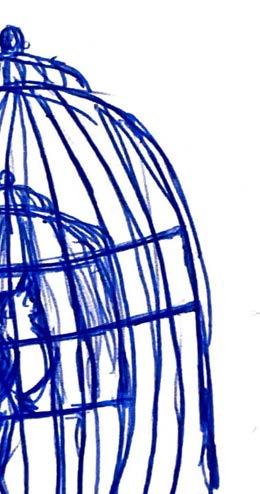
A private thrill is still a social artifact if the neural wiring that produces it was welded by outside hands.
Sex-work discourse offers an even clearer view of how choice is weaponized. The twenty-first-century rallying cry “Sex work is work” frames participation as a rational, autonomous decision within a free market. Yet the market itself is unbalanced: demand is overwhelmingly from hetrosexual males, supply is overwhelmingly female or feminised, and profit gravitates toward platforms and managers who do not share the risks borne by performers. When a woman chooses to monetise desire, she steps into a structure designed long before she arrived, one that converts her labour, self-presentation, and sometimes trauma into revenue streams controlled elsewhere. However these women often are choosing to utilise their femininity to make money in an industry that is fundamentally patriarchal and that in itself is a decision which gives them autonomy but may often also replicate the system. Capitalist patriarchy can tolerate many surface freedoms so long as the underlying flow of profit and attention remains undisturbed.
A private thrill is still a social artifact if the neural wiring that produces it was welded by outside hands.
The pattern repeats wherever “living free under capitalism” becomes a slogan. Capitalism promises boundless options, brands, careers, and lifestyles, while quietly restricting the field to what can be monetised. Every avenue toward liberation loops back to consumption, ensuring that dissatisfaction funds the very engine that caused it. Choice multiplies, but only inside a marketplace that sells back preselected versions of independence.
The differing argument presents that even if we recognise social influence that does not negate agency. Yes, but agency within a field entirely structured by external incentives resembles a chess move where every square except one has been removed from the board. Technically, the pawn still chooses its path; practically, the path was decided when the board was designed. Acknowledging this constraint does not mean abandoning responsibility; it means locating responsibility in the redesign of the board, not the heroic myth of the individual piece.
Supporters of the counter-view insist that individuals are not passive tunnels of ideology: we reflect, improvise, and sometimes weaponise the very norms that police us. Feminist, queer, and creative spaces hold numerous examples

Ramla Khalid dissects manufactured choice.
of breaking norms and critiquing the systems. Regardless, people reproduce systems even while subtly altering them. Such micro-resistances matter, they create cracks where new possibilities generate, but they are also precarious. Agency is undeniably real yet intrinsically relational, bounded by the cultural, economic, and legal scaffolding that grants certain moves visibility, safety, and reward. Genuine emancipation demands both celebrating these everyday renegotiations and expanding the scaffolding itself so that creativity is no longer a survival tactic but a freely chosen act.
Still, even the boldest departures can leave the scaffold intact. A drag performer who exaggerates femininity to parody it, or a makeup artist who wears exaggerated, colourful makeup as protest, both rely on the very beauty codes they reject; the audience must recognise the patriarchal template for the subversion to register. A body-hair activist posting unshaven armpits on Instagram must first photograph the “offending” hair, reinforcing that female smoothness is the norm being violated. Outside beauty, an OnlyFans creator branding explicit content as “self-managed empowerment” still depends on markets where hetrosexual male desire converts to cash. Each gesture bends the rules, but by speaking the system’s language it simultaneously reinscribes the grammar of power. Genuine emancipation demands both celebrating these renegotiations and expanding the scaffolding itself so creativity is no longer a survival tactic but a freely chosen act, and so resistance becomes more than a mirror held to power, but a doorway out of it.
Additionally, this recognition also punctures the moral complacency that often accompanies “progressive” selfpresentation. Declaring solidarity with sex workers while ignoring the economics that coerces many into the trade, or celebrating body-positivity campaigns funded by beauty conglomerates, merely adds ‘woke’ branding to old hierarchies. True progress begins by mapping how pleasure, labour, and visibility are still routed through male desire and corporate profit, then rerouting the circuits, even when the new paths feel awkward, unflattering, or unmarketable.
At the end of the day, this conspiracy has an Achilles’ heel: awareness.
At the end of the day, this conspiracy has an Achilles’ heel: awareness. Breaking out of this trap begins with naming the forces that shape us. We must recognize that our individual will is not formed in a void but
is the product of influence, influence so deep that it feels like our own idea. We are always being shaped and watched, even in solitude.
Such recognition can be uncomfortable. It means admitting that some of our most cherished “choices” were never just ours alone.
Such recognition can be uncomfortable. It means admitting that some of our most cherished “choices” were never just ours alone. It means grappling with the history and intent behind our habits: how women’s labor has been exploited, how our bodies have been objectified, how our aspirations have been guided toward certain ends. But this honest reckoning is profoundly empowering in the truest sense. It replaces false consciousness with clear sight. And from clear sight, we can move toward collective solutions. Rather than simply declaring “This is my choice” and leaving it at that, we can ask, “Who benefits from this choice? Do I truly benefit, do other women benefit, or am I perpetuating a harm?” Those are political questions, not just personal ones. By asking them, we reconnect personal choices to the larger project of ending oppression.
True freedom will come not from insisting we already are free in a fundamentally unfree system, but from collectively changing that system. And the first step is to stop believing the lie that patriarchy and capitalism want us to believe: that everything we do, we do of our own pure free will. As the feminist aphorism goes, “the personal is political”. Our task now is to remember that, and turn our personal awakenings into political action.
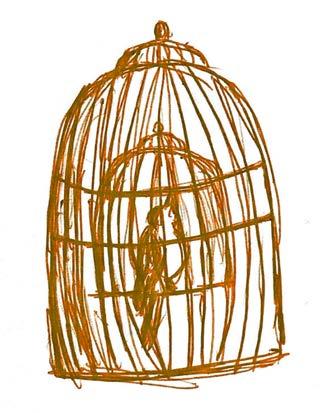
Art by Lotte Weber

A Queer Eye on the Conclave
As a queer person who spent their formative years inside Catholic school classrooms during the week, and on the parish Church pews every Sunday, the death of Pope Francis brought a swirl of conflicting emotions.
For many of us raised in the shadow of the Church’s teachings, Pope Francis offered something unfamiliar: a gentler, warmer face of Catholicism, which spoke more of love than of sin. This welcoming air in the Vatican — exemplified by Pope Francis’ now-famous 2013 comment, “who am I to judge?” — cracked open space for nuance and discourse within an institution that exudes moral certainty.
Though Pope Francis’ stance on the LGBTQ+ community remained complicated overall, his consistent emphasis on the importance of dialogue demonstrated the capacity of the ‘top boss’ job to bring about significant social and political change. Under the leadership of Pope Francis, the central government of the Church, the Holy See, engaged in frequent interfaith and diplomatic talks to advocate for the rights of marginalised groups and to facilitate peaceful resolutions to conflict. Encyclicals, speeches, and pointed letters to world leaders spanned topics including climate justice, human rights, and global wealth disparity, challenging the status quo of secular and religious communities around the world.
With the Catholic Church marred by a long history of colonialism and corruption, many Australians view the institution as outdated and irrelevant. And, consequently, consider the election of the next pope as a mere religious footnote at best. However, whether or not it should be, the Holy See continues to be a powerful actor within international relations.
Officially, the Holy See does not endorse political parties or any particular forms of government, maintaining a diplomatic posture of impartiality. This political neutrality does not translate to a withdrawal from the political world, but rather, enables strategic engagement with it. It can mediate between countries, speak across ideological divides, and by appealing to conscience rather than campaigning for power, frame moral arguments that transcend national interests. University of Oxford Professor of political science, Federica Genovese, has noted that “The church has historically filled a void of secular leadership incapable or unwilling to address political change”. In doing so, it solidifies its position as a soft power broker on the world stage.
This influence also extends to debates closer to home. In Australia, the Catholic Church is the largest nongovernment provider of education, health, and welfare services. What the Church, and as its leader, what the Pope says about gender, sexuality, environmental action, and education policy, matters greatly in these contexts.
As a prime example, Pope Francis’ 2015 encyclical Laudato Si’ became a rallying cry for climate justice. Unlike the politicians bound by electoral cycles and fossil fuel lobbies, the Pope used his impartiality and spiritual authority to freely criticise the failures of global capitalism, and stress the urgency of ecological collapse. During one of my earliest engagements in a protest movement, School Strike for Climate, I remember feeling a strange, yet distinct pride in the relentless advocacy of the Pope. Pope Francis’ emphasis on climate action as social justice felt like the recognition of one crucial idea, which deeply resonated with my burgeoning student activism: that caring about the future of our environment
Gian Ellis-Gannell says “it’s complicated”.
was not a partisan position, but a moral imperative — and that for all of the harm that religion caused, faith could be a vehicle for collective responsibility.
More recently, as a Politics and International Relations student, my despair while witnessing countless headlines, videos, and accounts of the Palestinian Genocide has been has been softened by Pope Francis’ vocal solidarity with the Palestinian people. Beginning in October 2023 and continuing even after his hospitalisation, Pope Francis made nightly phone calls offering prayers and counsel to the Holy Family Catholic Church in Gaza, which is currently sheltering a multi-faith community of around 500 people. Having already led the Vatican to recognise the state of Palestine in 2015, over the past 18 months Pope Francis has persistently criticised the brutality of Israel’s military occupation and called for a ceasefire. On Easter Sunday this year, he used his last public address, given from the balcony of St Peter’s Basilica, to condemn the “deplorable humanitarian situation”. Even whilst it seems that much of the global sphere has gone silent on the worsening genocide, I cannot help but find at least some comfort in that an institution which positions itself as a ‘moral compass’ of politics, is, in fact, taking a moral stance. And, that its leader has modelled a selfless love in both deeds and words.
Pope Francis’ papacy opened a small window, for many people like myself, to imagine that the Church could reconcile itself with justice. With the world now welcoming a new Pope, Leo XVI, only time will tell if it shuts again. But, if his papacy is anything like that of his predecessor, I have every hope that it will continue to widen.
Confessions of a Former Larry Stylinson Fangirl
Gracie Allen debunks iPhone conspiracies.

I have a confession to make. I am a hypocrite. I sit amongst my friends and poke fun at anti-vaxxers, or question the sanity of flat-earthers. Yet, from a young age, I was part of a conspiracy theory myself, and I am still actively recovering. It’s bigger than the government. Bigger than alien invasions or mysterious deaths. Dear reader, I am clearly referring to the world-wide phenomenon best known as Larry Stylinson.
For those who have preserved their brain cells, Larry Stylinson was the (officially unfounded, yet passionately defended) belief that Harry Styles and Louis Tomlinson of One Direction were secretly and desperately in love. According to their fanbase, they were held hostage by their management and forced into cruel ‘PR’ relationships for the sake of their careers.
Look. I know.
In my defence, I was a closeted 10 year old with far too much free time. What was I supposed to do? Unless you understand the primal thrill of getting home from school, logging onto your secret Twitter account on the family computer, triple checking you’re on incognito mode, and desperately searching for a new minor interaction between the band members, you simply cannot judge me.
It was a beautiful way of living. I felt like a double agent.
Externally, I seemed like a well adjusted 10 year old, who only cared about netball, school, and the new Brandy Melville shop that opened at the mall. But behind an anonymous profile, I was an avid “Larry’s Cutest Moments!” video viewer who spent hours unpacking interviews on group chats with strangers I’d never met. We would analyse eye contact, screenshotting moments that we called ‘proof’ — because friends just didn’t look at each other that way. Among all the One Direction related talk, we got to know each other. I didn’t know what they looked like, but the group chat always had advice whenever I asked.
Of course, being a “Larry” wasn’t just a hobby. It was a lifestyle. The fandom spoke in code. We made endless ‘proof masterposts’ on Tumblr with suspiciously scientific titles like “Analyzing Body Language: 67 Reasons Why Larry Is Real”. We genuinely thought we were the last line of defense against the evil forces of Modest Management, an entity we believed was dedicated solely to preventing two British boys from holding hands in public. After all, One Direction wasn’t just a band, they were a brand. They were advertised to teenage girls, dangled over their heads like they were available to them. Two members being queer and completely off the market just didn’t work.
It wasn’t all bad though. Among shitposting and fans hacking airport security cameras, I found a sense of belonging. Beginning to question one’s sexuality at such a young age is terrifying, but finding a community where queerness was not only accepted, but celebrated and desired, was so important. Larry may not have been real, but the struggles the fandom ascribed to them were. A fear of coming out to the public, having to hide your identity, the risk of losing the people you love. Through shipping Larry, young queer fans could not only safely explore these fears, but construct alternate realities in which they didn’t even exist.

In hindsight, I might have needed a significant lesson in cybersafety. Or therapy. Maybe even an exorcism.
Recovery has been slow. Even now, the scars run deep. I still can’t look at a blue and green object next to each other without experiencing flashbacks to grainy concert footage, hyper-edited GIFS, and panicking at 2am because Louis didn’t tag Harry in a photo.
Nowadays, I try to channel my passion into healthier pursuits. You know, like binge-watching Yellowjackets having my laptop open with an empty Word doc whilst I
scroll TikTok. But sometimes, when I see a random paparazzi photo of Harry smiling at the wind, a tiny part of me wonders: was he thinking of Louis?
No. Bad. Go touch grass.
Healing isn’t linear. But at least it’s not 2015 anymore.












You Are Not Too Old
Every time I remember my age and realise I’m about to unleash an existential whinge, a particular season from my second year of university comes to mind: the one where my cohort was dangerously close to turning 20. Right, left, and centre, people lost their minds over the impending Sisyphean destiny of ‘adulting’, of becoming ancient overnight. Only, when the fateful day arrived, we discovered we were, somehow, pushing off in a new, glistening wave of youth. We blew out the candles, watching the angst evaporate. The new decade was already hailing promises of greater excitement and bigger opportunities, and we hadn’t even stepped off the welcome mat.
From a young age, we have been telling ourselves that we’re ‘getting too old’. It started off as the most stoic thing to do — plus, outgrowing Santa Claus and training wheels earnt us bragging rights on the playground. Then one day a classmate, only 11 days my senior, after sheepishly asking for my name a second time, laughed it off with a little quip about their failing memory. Even a birthday card lovingly thumped me on the back with casual ageist humour that year. Before long, I was echoing the exact same sentiment, when a familiar name refused to unstick itself from the tip of my tongue, when my shoulders got sore, when I resigned myself to clicking “Forgot Password?”
Over-identifying with our age makes for some great ironies. Does 30 Under 30 fill you with inspiration, or does it feel instead like some dreadful expiry date?
One afternoon in 2016, I sat down to peruse the family photo album with my youngest sibling. She pointed at a photo of herself taken two years prior, announcing proudly: “I was one-and-a-half there, only a baby!” It was so endearing that all the adults within earshot laughed. But I was simply stunned. I had just witnessed, in someone barely three, the quiet authority age can hold when you let it define you; how it transforms not only how you feel about yourself, but how you carry yourself going forwards.
It’s true that our physical, intellectual, and emotional capacities fluctuate over the course of our lives. This isn’t all bad news. If you allow it, change makes room for discipline and new growth. It’s also true that in this moment we are the oldest we’ve ever been. But what doesn’t make sense at all is how easily we surrender our strengths and unexplored potential because of a number, letting age-based expectations validate what we should or shouldn’t be doing. Each of us follows a unique trajectory of growth, fashioned by the combinations of experience we carry and continue to acquire. This gets lost in translation when distilled into a numerical age.
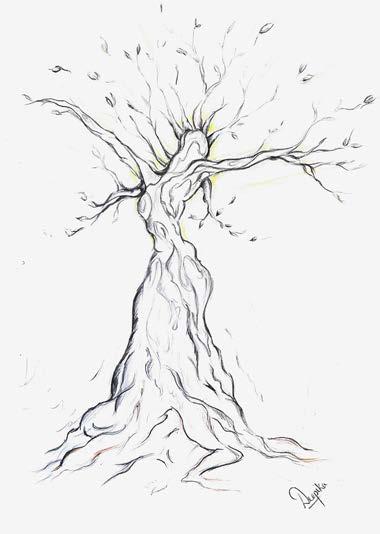
Art by Deepika Jain

Judy Zhang is still growing up.
Back in Year 11, I took one glance around at my peers who had taken a foreign language subject since Year 9 and decided that, at 16, I was out of the running. Through internet osmosis, I knew no entiendo, a nauseoussounding au revoir, and the awkwardly truncated German phrase Brot bitte (“bread, please”). Wasn’t the best age to learn a language during the early teens, or even before then? But I was never fussed to fact-check anything. What actually paralysed me was the dread of conjugating verbs and gendered grammar. I chose the easy way out. I remained stuck in neutral. It wasn’t until November 2024, after a conversation with a friend majoring in European studies, that I came to my senses. I got home, hopped on a brief Google spree to scope out my learning resources, and finally kicked off my German self-study journey. It’s slow progress, but at least I’m now aware that a more natural way to ask for bread in German is ich möchte ein Brot bitte.
Take a moment to think about the things you tell others you hope you’ll do one day: communicate in Wingdings, touch your toes, start investing — whatever. It still isn’t too late, really. And not because your prefrontal cortex isn’t finished with development until around 25 years of age. There’s contention surrounding this piece of research, but only because a structurally developing brain is often misinterpreted as an indicator of (im)maturity or a sign of peak cognitive flexibility — whichever makes for the convenient argument. It doesn’t mean that those below that numerical threshold are incapable of reasoned judgement or decision-making, and it sure doesn’t mean that those with fully-developed frontal lobes are henceforth doomed to ricochet every new piece of information either. Neuroplasticity is a lifelong superpower.
We are more resilient than we let on, even to ourselves. The hardest thing, though, is spending years mourning the window you thought you missed, only to realise it was never a window at all. It was a doorway, and it’s been open the whole time.
“I’m not really a flat earther, it’s just my alter ego.” “I’m not really a flat earther, it’s just my alter ego.”
“I’m not really a flat earther, it’s just my alter ego.”
A sentence I have repeatedly stated to people over the past few years. I, her alter ego, used to be inextricably connected to Cassidy. Now I am just a part of her that appears when she needs to laugh. The big question is: how did I become Cassidy’s flat earth alter ego?
Cassidy’s childhood was characterised by The X-Files in the background while she played, and watching ‘Aliens — Real Footage’ videos before bed. Her Dad was always a little skeptical, teaching her about the Area 51 conspiracy theory as a six-year-old. As she and her brother grew up, they shared a book about conspiracy theories, each taking turns to read it, over and over again.
This little spark of curiosity exploded when she discovered Shane Dawson’s conspiracy theory videos (before all the weird stuff, of course). One in particular: ‘Mind Blowing Conspiracy Theories’ had a new segment where Shane and his brother discussed the flat Earth theory. This was my origin.
As Cassidy grew up, her interest in conspiracy theories dwindled, partly because the mere mention of a conspiracy theory made everyone see a tinfoil hat on her head. How could she talk about something without people discrediting her as a person?
Create an alter ego.
My first appearance was in her senior years of high school, where, in a consistently boring class, Cassidy needed to do something interesting and funny. She turned to her two best friends and said, “did you know I am a flat Earther?” Condescending looks. Giggling. Immediate disbelief. They immediately tried to debunk the theory, telling me how silly I was for believing it.
I wouldn’t be a useful alter ego if I didn’t know my stuff. I had an array of arguments up my sleeve that I would produce with unabashed belief. I had an image on hand —
“look at the flat Earth map vs the United Nations logo”.
Cassidy Turrell’s alter ego is
“Why can’t we go to Antarctica by ourselves? Because they don’t want you to discover the ice wall”. And when all else failed, a simple “have you ever been to space and saw that the world was round?” was the cherry on top.
From friends, to family, to nurses in the psych ward, I would appear often. Somewhere towards the end of the conversation Cassidy would say, “I told you I wasn’t a flat earther, it was just my alter ego”, and people would realise they’d just debated for no apparent reason. This was Cassidy’s favourite part.
It always did intrigue her as to why people were so insistent on debunking the theory. If it’s such an illogical theory, why do we try so hard to debunk it? When you Google, ‘flat earth theory’, why are all the top results about discrediting the theory?
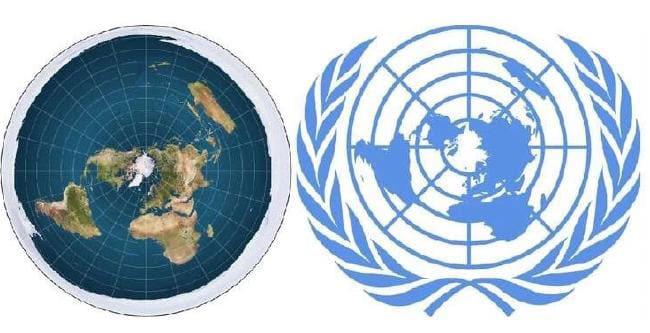
a flat earther.
It was interesting. It was also funny. Watching people laugh as I mentioned the silliest flat earth arguments. Listening to how people would refute different points. “Look at pictures from NASA”, they’d instruct. “We can see the curvature of the Earth”, they’d refute. “It’s been debunked”, with a tone of finality. I’d watch their exasperated looks while I shook my head and explained it was all linked to the New World Order or the Illuminati or Reptilians (I had to keep it interesting).
Was I created to seriously advocate for the theory, or to have fun? A little bit of both. Cassidy is not a flat Earther. But that one Shane Dawson video (I know, I’m sorry), will stick with her.
At the same time, nothing could beat the laughter that followed when I defended the theory by saying, “the word ‘planet’ is just the word ‘plane’ with a ‘t’. Add an interest in conspiracy theories, a love for debating and a fulfillment from laughter, you end up with a conspiracy theorist for an alter ego. Or perhaps, you have a Dad who shows you videos he took of UFOs above your house.










Kylie Minogue Never Actually Died
Will Winter is Loco(motion) for seeking the truth.
The music industry is littered with conspiracy and secrets, blurred lines of fact and fiction interwoven with scandals, white lighters, and lyrical mysteries.
There are some who believe that Tupac is hiding out on a private island, or that JLo can’t actually sing, or that Gracie Abrams makes good music. But today, I present to you a theory so solid, you’ll have no choice but to believe my words when you hear them. Take my hand, dear reader. I am here to tell you why I believe Kylie Minogue never actually died.
We all know where we were when the news broke two years ago that Kylie Minogue, legend of the music stage and TV screen, queen of the gays and crown jewel of Australia, was announced dead. Whilst many believe that Queen Kylie fatally died after fatally dying from crowd-crush in a crowd of thirsty middle-aged homosexuals in 2023, the truth is that she never actually
fatally died from crowd-crush from the crowd of thirsty middle-aged homosexuals.
I know we all think she’s Spinnin’ Around in her grave, but I believe that Kylie Minogue is still alive.
How? Let’s look at the evidence.
First of all, let’s turn to the other princess of Australia, Nicole Kidman. As we all know, in the mid ‘80s, Kidman and Minogue, with their physical resemblance and parallel talent levels, took a Norwegian blood pact to consolidate their fame potential and Aryan bone structures for all of eternity. After the ritual, involving the sacrifice of a virginal Italian and singing of a happy little ditty, their propensity for critical acclaim soared, but with a cost: if one is in the headlines, the other cannot be.
When one rises to power, the other plummets. When Minogue releases an
album, Kidman takes a few months off filming. Whilst she’s always been an international film darling, it is no coincidence that Kidman’s fame has exponentially surged since Minogue’s untimely (alleged) passing. There would be no Babygirl or Netflix original movies with Zac Efron if Minogue didn’t mysteriously pass away, channeling all of their symbiotic star power into the last remaining soul of the blood pact. Perhaps, sick of the rat race of skirting international charts and never quite piercing The One position, Minogue sacrificed the allure of ‘alive celebrity’ and decided to transmute the rest of their communal prestige into Kidman’s vessel.
Secondly, her sister, Danni Minogue, has been unexpectedly removed from the public eye since… well, okay, Danni was never the star of the family and no one really cares about her, so this hasn’t changed much.
Lastly, the hologram from Kylie Minogue’s 2025 Tension tour looked exactly like Kylie Minogue. While a hologram tour is not unprecedented (see ABBA’s Voyage tour, which was literally a hologram tour but not international? Why can’t I sing Dancing Queen in Australia with ABBA holograms, you cowardly Swedish nincompoops!), it was slightly confusing and arguably distasteful for the Minogue estate to move forward with their 2025 Tension world tour as a tribute hologram show. Many fans who attended, however, claimed that the movements of the hologram were more akin to that of an overly-articulated animatronic. It was so unnerving that many a fan Can’t Get You Out of my Head — you, of course, being the terrifyingly life-like and unexpectedly short-statured Minogue who frolicked and strutted around on stage. Is this because it wasn’t an animatronic, but Minogue herself, who committed to her tragic plight and then regretted it?



Avin Dabiri is 639


years old.
Time. The one thing we’re told we all have in common. The ultimate equaliser. A passage that every person experiences — taking us from one moment to the next. We all get 24 hours in a day. 1440 minutes. 86400 seconds. It’s a comforting thought; that whether you’re a millionaire or a university student, the clock will tick forward just the same.



The theory describes that Pope Sylvester II and the Holy Roman Emperor Otto III conspired to fabricate the “phantom time” of 297 years — the Middle Ages — in order to place themselves in the year 1000 AD. A political move to improve their prestige and legitimise Otto’s claim to the Holy Roman Empire.




Chronocracies; Who Owns Time?

However, this comfort is an illusion. In practice, this so-called ‘universal’ progress of existence bends and contorts in the presence of power. Millionaires, emperors, CEOs, Popes — they all shape how time is structured, used, and even remembered. Time is not neutral. Like all things important, this untamable and ungovernable force that dictates our entire lives, falls at the mercy of the powerful.
I was born in the year 1385.
No, I’m not a time traveller or a character from the Middle Ages. I was born in Iran, where the Solar Hijri calendar governs birthdays, cultural celebrations, and official records. In the Gregorian calendar that same year would be 2006. A disruption of time that shows the true myth of global synchrony.
Across the globe, people live not only in completely different time zones, but entirely different centuries. In Myanmar, the year is 1387, whilst Thailand is now in the year 2568. The Nepali are in the year 2080 whilst Ethiopia only recently entered 2017.
Time, so often imagined as a linear truth and inherently uncontrollable, is in fact foundationally and culturally constructed and imposed. And something that can be constructed? It can also be claimed. Weaponised. Stolen. Given. And in some circumstances, time is rewritten entirely.
The Phantom Time Hypothesis is a conspiracy theory stating that what we know as the ‘Middle Ages’ never happened.
Why would she do this? If she was faking her death to escape the spotlight, then why would she return in such an intimate manner that would blow her cover? I don’t believe Minogue intended to return to the stage. No, I believe Kylie intended to follow through with her escape from the world of celebrity and international queer notoriety, perhaps meet a mysterious stranger in the Bahamas and fall in Love at First Sight, a man who treats her like an Aphrodite, who’ll make her Come… into My World. And yet, somewhere deep down, she knew this wasn’t the right choice.
In the years to come this theory has been largely disproven by varying historical and scientific observations. But why has the theory been so resonant if it has been proved fictitious? Because it reveals a cultural truth. History itself, like truth, is vulnerable to manipulation and control by those with power.
The control over time doesn’t only dictate what we remember, archive, and narrate, but extends to clouding our inherent identity. Timelines, calendars, and holidays — they are all efforts made by empires past and governments present to anchor the national identities of masses. In dictatorial and authoritarian regimes, leaders rewrite school curriculums and censor the media to distort the perception of what is real. This distortion leads to identities being pieced together that are shaped completely by the narratives that powerful people want us to think and believe. In this sense, the Phantom Time Hypothesis presents itself as a raw metaphor; the control over time doesn’t just fragment history, it shapes what people believe, their memory — and ultimately, their identities.
In most cases, we may not truly feel the control wielded over time, but in small ways it presents in all paths of life. In corporate workplaces, those with lower positions work their hours dictated by a schedule of their bosses. Their hours are monitored and their time off surveilled and budgeted. In higher levels executives enjoy flexibility and control over time they work; having the power to distribute work and have assistants who manage time on their behalf.
Kylie, if you’re reading this, come back. I know it may seem fickle and embarrassing to own up to your long con, but Your Disco Needs You, and whilst you’ve Got
to Be Certain it’s the right decision, I think you’d be greeted with nothing less than a Celebration.
I believe Kylie Minogue, with purest intent, went out in a blaze of homosexual glory, intending to ride the high of mega music stardom and minor TV soap fame for the rest of her anonymous life, and then realised her heart belongs on stage. Out of All the Lovers, her true love is performance. But we all knew this. If you did actually die, sorry!
In other parts of society we see celebrities, the ultra-rich, outsourcing their time. Having access to private chefs, drivers, nannies, assistants — resources that allow them to literally gain more hours in their day. With their private jets they bend geography and time zones, compressing their travel time. Their wealth allows access to beauty and health treatments, specialised doctors and longevity research that extends their time on Earth. We see power being used to not only control the function of time, but to also stretch how long it lasts.
So we can see time is everything. It’s the basis of our memory, identity, work, relationships… everything. Therefore, its theft manifests as the quietest form of oppression. A whisper that echoes through the lives of those who stand still in ‘wait’ — in courtrooms, in shelters, in locked-down detention centres watching the world pass them by. Time is drained in ways that go uncounted, undocumented. Bureaucracies and broken systems steal years from people with little to no recourse. We watch the powerful play with the limits of time, stretching and prolonging it to fit their desires, whilst marginalised individuals are forced to live on borrowed minutes, scraping together moments to sustain their survival. In these moments we must ask ourselves: who gets to waste time?


And who must account for every second?
There is no way for us to dismantle the structurally unequal systems that seek to extract our time. However, what we can do is live life accounting for every second. Refusing to let time be dictated by profit or performance or the overbearing power that others wield. Our time in life is the most valuable thing we have. Not because it can be counted or controlled but because it can be felt in every moment we live. In shared laughter, moments of stillness, time spent with people we love.
To live with intention in itself is an act of defiance against the control of time. To rest without guilt. To disconnect. To daydream. These moments of ‘wasted’ time are how we resist the control of the powerful.
The measurement of time is not a neutral ticking clock. It reflects a twisted architecture of power and control - where time can be stretched, rewritten and stolen.
But even within this control over time, we can carve out spaces for resistance. To live deliberately — slowing down and reclaiming slow and sacred moments — not for productivity or to satisfy anyone else’s agenda but to regain power over the moments that are completely ours.
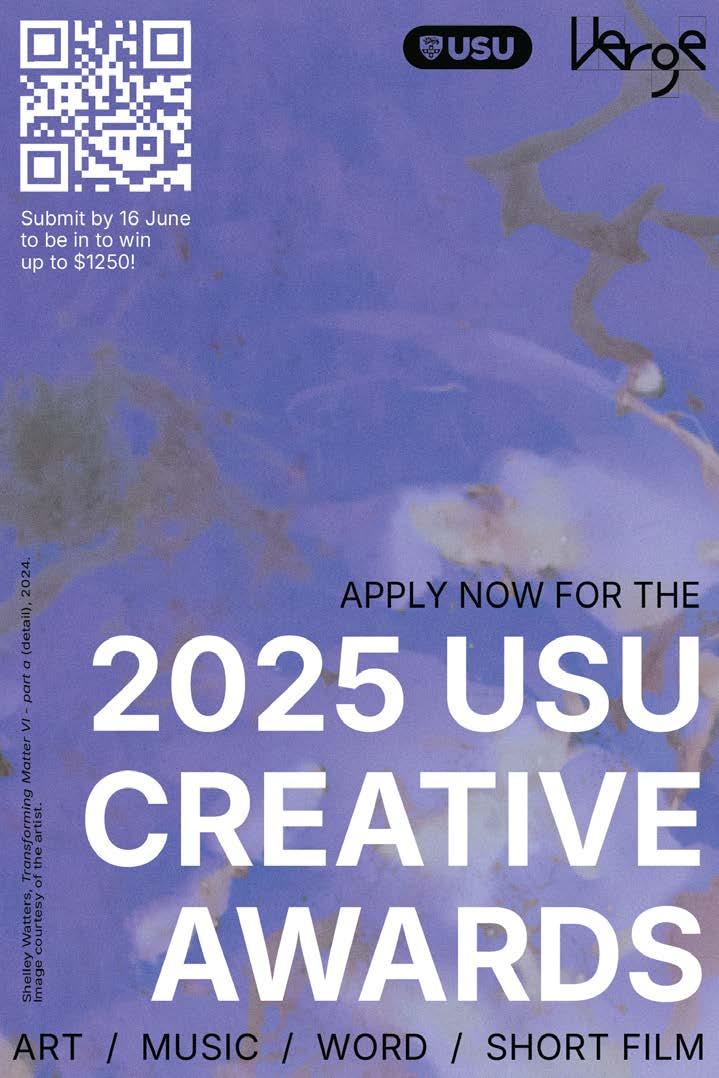
President
Angus Fisher
The end (of Semester 1) is nigh. Find the light at the end of the tunnel in my report.
As you may recall, at the end of last year, I attended the NSW Drug Summit and early this year, I contributed to the post-summit youth statement. I am now organising a panel forum discussing the future of drug reform following the summit. It will be on Tuesday, June 3rd at 6:30 pm. We will have speakers from Harm Reduction Australia, the Edith Collin’s centre, NUAA, and more. More details to come!
Last week, on May 15th, was the 77th anniversary of the Nakba, which was the beginning of the ethnic cleansing of Palestinians, and members of the SRC attended a demonstration at Town Hall. The SRC gets a lot of criticism for why we take part in and build around events like these. I believe that as students, we have overwhelming strength in numbers. We are the future, and so we ought to try to create a world that we would
Vice President
Shovan Bhattarai, Bohao Zhang
As exam season rolls around, the International Students Collective and I have been hard at work. Aside from our Market Day event hosted at the International Student Lounge earlier this month, where we coordinated a range of international student and local vendors, we also recently hosted a range of watchparty events where free food was provided. These were done with notice through the Collective’s Instagram story – be sure to follow us so you don’t miss out on future such events!
Aside from helping around the Collective, I have been continuing
be proud to be in. If you doubt the strength of the student movement, even the potential of an inch of change is worth fighting for.
I had the privilege of chairing an SGM last Wednesday. Not many SRC Presidents get the opportunity to facilitate a 200+ person meeting that discusses and votes on “contentious” motions. I spent a lot of energy negotiating with the university on the conditions of the SGM to enable it to run. Initially, they wanted it to be filmed, which would sacrifice the independence of the SRC and the safety of student attendees. By going directly to university management, I argued these exact points and was able to get this condition scrapped. Negotiation works and achieves outcomes for social movements. It’s a key responsibility of any SRC President.
In solidarity, Angus
to cooperate with FoodHub and the wider USU. Importantly, I have begun talks with representatives from the USU Board regarding a Textbook Exchange Program that will help the student body secure textbooks at a reasonable price. Given the huge number of candidates in the USU Board Election this cycle who have promised to facilitate increased cooperation between the SRC and the USU, I look forward to exploring other areas our two organisations may collaborate on in the future.
Bohao
International Student Officers
Ethan Cao, Fengxuan (Mary) Liu, Christine Peng, Yuanbo (Bob) Song
The International Student Officers did not submit a report this week.
Sexual Violence Officers
Ishbel Dunsmore, Saskia Morgan, Grace Street, Lucy Sullivan
It’s been a busy period regarding sexual violence and bodily autonomy. In recent weeks, we have had to again deal with “abortion abolitionists” coming onto campus to spread hate and misinformation, before seeing these same anti-choice people at the protest against the Abortion Bill outside NSW Parliament House on Wednesday 7th May. This bill, brought by Greens MP Amanda Cohn, to expand access to abortion has fortunately passed both houses of NSW parliament. Although it received major amendments in the Upper House, it is a win – a much-needed one at that during this current rise in right-wing, anti-women rhetoric.
Last week on Thursday, SRC staff and Office Bearers attended a training provided by Full Stop Australia on responding to disclosures of sexual violence. Grace went on behalf of the SVOs, bringing back new knowledge
about things to say to victimsurvivors, things to look out for and potential impacts of sexual violence on an individual and their community, and ways to help in these situations. We discussed the intersections with gender and sexuality, race, cultural and socioeconomic status that are not so often centred in these conversations. From here, we can work to improve our own resources for the community on responding to disclosures and on hotlines and groups to contact.
We remember and commemorate our fellow student, Audrey Griffin, who was recently murdered in an act of femicide by a known, violent man that the system failed to protect her from. As of last week, there have been 27 women killed in Australia this year so far in this femicide epidemic.
Welfare Officers
Daniel O’Shea, Annabel Pettit, Mia Williams
The Welfare Officers did not submit a report this week.
Ethno-Cultural Officers
Dana Kafina, Kayla Hill
The Ethno-cultural Officers did not submit a report this week.
Refugee Rights Officers
Laura Alivio, Ishbel Dunsmore, Sebastian Ranasinghe, Lucas Pierce
The Refugee Rights Officers did not submit a report this week.
Leaving a Rental Home & Getting Your Bond or Deposit Back

Before you move in
You can maximise the likelihood of getting your bond back when you move out by doing some forward planning before you move in.
Complete the condition report if you have one, noting absolutely every single dirty or broken thing in the house, and email yourself and the landlord clear photos of each of these. Whatever isn’t noted on the condition report will become your responsibility, regardless of whether you broke or dirtied it. If you don’t get a condition report, it is even more important to send those photos. Keep a receipt of any money you have paid including a bond or deposit.
During your stay
It is important to keep your landlord or agent informaed about any repairs that are required durin your stay. Email (written) your landlord about any repairs. The NSW Tenant’s Union has a factsheet (link below) outlining your rights and responsibilities around repairs. You are allowed “fair wear and tear” so don’t be scared to report things.
When you move out
You need to leave the home in the same condition, minus fair wear and tear, as when you moved in. You will not be considered as having moved out, until the landlord gets the keys back. When the landlord inspects the property, they may note damage, that was not in the incoming condition report, or cleaning that you will be responsible for paying for.
A tenant must pay the rent up to and including the day their termination notice period ends and they vacate the property.
Ask Abe
SRC Caseworker Help Q&A Discontinue Fail (DF)
Dear Abe,
My semester started really well, but then things started piling up, and I stopped submitting assessments for one of my units so I could focus on passing the others. I think I’m going to fail this unit, and I’m worried about what that means for my WAM. My friend told me it’s too late to withdraw from a unit, is that true? Is there anything I can do about this?
Snowed Under
If a tenant does not owe the landlord money at the end of their tenancy and there is no damage to the property, the bond paid at the beginning of the tenancy should be refunded in full.
If the landlord or agent believes the tenant owes money, they can make a claim against the bond.
Here are some of the main reasons that at landlord may make a claim against the tenant’s bond.
• unpaid rent
• reasonable cost of repairing damage to the property that is beyond fair wear and tear
• unpaid water usage charges, as long as the landlord requested payment within three months of receiving the bill
• any ‘break fee’ or other charges payable as a result of the tenant breaking the tenancy agreement early
• reasonable cost of cleaning any part of the property not left reasonably clean, considering how clean the property was at the start of the tenancy, and
• reasonable cost of having the locks changed, or other security devices replaced, if the tenant doesn’t return all keys and security devices they were given.
This is not a complete list. For a full list and more details, head to the Tenants Union fact sheet below.
If you believe you have not been treated fairly, contact an SRC Caseworker to find out what your options are.

Dear Snowed Under,
If you withdraw from the unit now your grade will be DF –Discontinue Fail. You still have to pay fees, and it will count as a fail on your transcript. This may affect your academic progression status and in a few courses will affect your Weighted Average Mark (WAM).
If you are an international student, you will need to apply for a reduced study load and provide the necessary supporting documents.
If dropping a subject makes you a part time student, it will affect your Centrelink payments, student visa status, and Opal card concession. Abe
If you need help from an SRC Caseworker start an enquiry on our Caseworker Contact Form: bit.ly/3YxvDUf


If you withdraw from a subject before the last day of semester (30th May) you will receive a DF grade. It still counts as a fail, but in many cases will not affect your WAM. more information >>>> sydney.edu.au/students/ discontinue-unit-of-study.html

‘Quick’ Crossword
Across
2 Noted pseudonym in short story writing (3)
4 “The Taming of the ___” (5)
6 Self-checkout device (7)
8 Helping Americans eat at Thanksgiving (6,3)
10 Bottled spirit (5)
11 Beasts of burden (5)
Down
1 Meat (5)
2 Tremble, and former Honi ticket (5)
3 Nairobi is its capital (5)
4 Faux money (5)
5 From Cardiff, say (5)
6 “The father of modern China” (3,3,3)
7 Word after heat, fire, or water (9)
Week 11 Crossword Answers
13 Coral component (5)
15 Some people can’t take them (5)
17 Divided peninsula (5)
18 Title of elected local government officials (3)
19 Plants-to-be (5)
20 Covenants (5)
22 Between ports (2,3)
8 Telstra or Optus for example (7)
9 First book of the Bible (7)
10 Tennis’s Ivanisevic (5)
12 “Stainless” metal (5)
13 Soda, dad, genre? (3)
14 Militant construction union deregistered in the ‘80s (3)
16 “Union” that represents retail workers (3)
23 Military denial (2,3)
25 Thrash about (5)
26 Acupuncturist’s pathways (9)
28 Pay no attention to (7)
29 Printer problem (2,3)
30 Corporate wants new toys? (3)
21 Ambulance’s warning (5)
22 “Alas and ___!” lament (5)
24 Strict precision (5)
25 Wicked spirit (5)
27 Opposite the center and guards, in American Football lingo (5)

Across (by individual row): Won, Bares, Any News, Anonymous, Slice, Organ, Comms, Davos, Sana’a, MUA, Rebel, Santa, Ocala, Raise, Prole, Corporeal, Need Not, Deeds, STL Down (by individual column): Corny, Wayne, Neemo, BNOCs, Sword, Animation, Sugarcoat, Almanac, Save All, Sonar, Noble, CAS, NUS, Sea, As Red, Oreos, Epees, PRNDL, Odets
Puzzles by Some Hack

Sudoku Quiz
1. Which year did the University of Sydney Senate resolve to reduce the number of Fellows from 22 to 15?
2. The 1938 Dalfram dispute occured because workers refused to ship iron to which nation?
3. What traumatic event sparked Hong Xiuquan into starting the Taiping Rebellion in 1850? 1. 2015; 2. Japan; 3. Failing the imperial civil service examinations;
USyd in the ‘30s: Closed cadaver tunnel under Susan Wakil Health Building
Lotte Weber delves into the archives.
Ghost stories and haunted conspiracies abound at the University of Sydney. Prior to its 2021 opening, the Susan Wakil Health Building was occupied by Blackburn Building, constructed between 19301933. Below, an underground tunnel connected it directly to the Royal Prince Alfred Hospital’s morgue, allowing
cadavers for dissection to be wheeled discreetly away from the public eye. Even before Blackburn’s demolition in 2018, the tunnel was blocked off, lying partially collapsed and forgotten. Today, students whisper of flickering lights and inexplicable breezes. Haunting or conspiracy? You decide.


Special Buys Bad. Same.
Action
Rangas on the USU Board
We’ll aim for a 60% majority next election.
Minority representation!
The cure for the straight woman who “just can’t find the right man” and realised that a woman would be better at getting the job done.
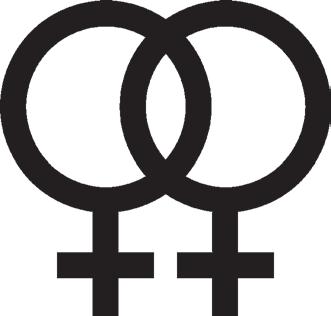
Actually Talking About Your Emotions
The perfect ointment for the victim of the male loneliness epidemic in your life. Need some help guys? Here: I’m feeling...
“Do
New Major Party Loggo

This is for everyone in the SRC. Refer back to here when it’s your birfday!

think if
enough you’d be interested in women?” Look hot while you get sloshed. Take sexy pics with a vaguely intoxicated look in your eyes. Pairs well with regret, post-breakup sadness, and soundproof office walls.
The Official
Horny Soit Purity Test

Have you ever...
1. Visited the Honi office?
2. Cooked in the Honi office?
3. Taken off your clothes in the Honi office?
4. Left a used cup of water in the Honi office?
5. Flashed a member of the Honi editorial team?
6. Used the pages of Honi to wipe away your tears?
7. Touched the breasts (boobies) of a member of the Honi editorial team?
8. Done a nudie run down the SRC corridor?
9. Slept over in the Honi office?
10. Written anonymous smut for Honi?
11. Written anonymous smut for Honi which was rejected?
12. Eaten out or got eaten out by an Honi Editor in the SRC office?
13. Asked to be on an Honi editorial ticket with a single-digit article count?
14. Ran as a joke ticket for Honi?
15. Flashed the front door SRC staff because you forgot your swipe card and really needed to get in?
16. Complained about the lack of crosswords in Honi in a letter to the editor?
17. Thrown Honi across the room in a fit of rage?
18. Left a copy of Honi on the City Rd footbridge stairs for the Honi editors to walk past every day and cry over (shame on you!)?
19. Subtweeted shit about Honi thinking you were slick when you weren’t?
20. Engaged in friendly small talk with the Unibros guys?
21. Used your womanly wiles to get a discount at Unibros (you don’t have to be a woman to do this)?
22. Climbed over the Unibros counter?
23. Engaged in fisticuffs with the Unibros staff?
24. French-kissed the Unibros staff to apologise for aforementioned fisticuffs?
25. Visited the mortuary in Anderson Stuart?
26. Looked into the eyes of a cold dead corpse in Anderson Stuart?
27. Had an existential crisis in the formaldehyde-scented basement of Anderson Stuart?
28. Discovered that secret library on campus that nobody knows about?
29. Been to all nine floors of Fisher Library?
30. Received an overdue fine from Fisher Library?
31. Flirted your way out of an overdue fine from Fisher Library?
32. Smuggled a non-USyd student into Fisher Library after hours?
33. Spent a full 24-hour cycle on the USyd campus?
34. Stargazed on the Quad Lawns?
35. Got fingered in Vic park?
36. Made eye contact with a dog while pretending you weren’t getting fingered in Vic park?
37. Gotten walked in on hooking up with someone in an abandoned lecture room?
38. Hooked up with your slightly musty economics tutor after your 11am tutorial?
39. Played pool in the PULP office?
40. Wished you gave a cooler answer to a PULP vox pop?
41. Used a PULP condom?
42. Told a pro-abortionist on Eastern Ave to fuck off?
43. Told a StuPol campaigner on Eastern Ave (politely) to leave you alone?
44. Snooped around the Carillon Room?
45. Spotted people graffitiing in the Graffiti Tunnel?
46. Graffitied the Graffiti Tunnel?
47. Spray-painted each others’ bodies and made sweet, sensual love on the cold concrete floor of the Graffiti Tunnel?
48. Projectile vomited on a member of the university administration?
49. Egged something that belonged to Mark Scott (e.g. car)?
50. Fumed at the price of a pizza at Courtyard Cafe?
51. Reluctantly paid for a pizza at Courtyard Cafe?
52. Sadly ate your pizza which wasn’t actually that good from Courtyard Cafe?
53. Discovered several years into your degree that the USU has a Board?
54. Had a sex dream about one of the USU Board members?
55. Climbed onto the roof of a building on campus?
56. Been CAP’d for putting up a poster?
57. Made out with someone, only to discover later that they were part of SAlt?
58. Guiltily continued to see them, even though they were part of SAlt?
59. Broke up with someone ‘cause they were cool but then you remembered that they were part of SAlt?
60. Slept with your revue director?
61. Had a brief fling with an overdramatic SUDS member?
62. Signed up to a society for the freebies?
63. Numbered every box below the line in a Federal Senate election?
64. Drawn a penis on an election ballot?
65. Voted for yourself on an election ballot?
66. Had sex with Pauline Hanson on an election night?
67. Had sex on a ballot box after voting 1 Greens?
68. Used your Greens ‘how to vote’ pamphlet to clean up after said sex?
69. Helped oust Dutton (directly or indirectly)?
70. Gotten wasted at a Young Labor party?
71. Traded your body for political secrets?
72. Gotten ICAC’d?
73. Been clubbing after quorum got pulled at SRC Council?
74. Broken regulations in a university election?
75. Contracted a chest infection from a StuPol candidate?
76. Drank Unity punch?
77. Drunkenly admitted to have a sex dream about someone in the OB room while they were in the OB room?
78. Promised dates or sexual favours for student election votes?
79. Drank or done drugs in the SRC offices?
80. Had sex in the SRC President’s office?
81. Been tied up and called a ‘good boy’ in the SRC kitchen?
82. Vomited in a bin in the SRC office?
83. Been kissed by an alien?
84. Been fingered by an alien?
85. Been fisted by an alien?
86. Had a weird situationship with an alien which lasted for like way too long?
87. Tongue punched an alien’s fart box?
88. Gotten a carpet burn from tribbing an alien?
89. Jaywalked City Rd?
90. Jaywalked Parramatta Rd?
91. Jaywalked the Great Western Highway?
92. Shaved your bush on the Great Western Highway?
93. Had sex on the Great Western Highway (not in a car)?
94. Had sex on either the 422, 423, 433, 440, or 470 bus?
95. Spun a fidget spinner using only your pelvic floor muscles?
96. Drank alcohol paid for by SSAF?
97. Partied at the Rose on two consecutive nights?
98. Gotten Maccas even though we’re meant to be boycotting right now?
100.
99. Stopped in the middle of sex because of a moment of #catholicguilt? Done something on this list after reading it all to get extra points?
Score: ___ / 100
